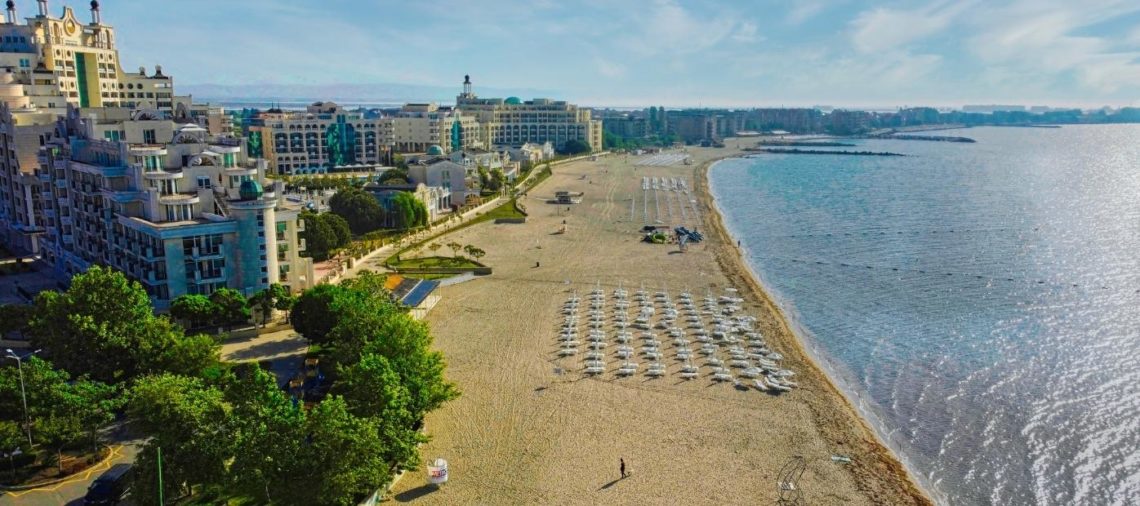Romanians who have holidayed in Bulgaria in the Sunny Beach resort area have certainly heard about Pomorie, this small town located 18 km north of Burgas, one of the most charming places on the Bulgarian Black Sea coast. Pomorie occupies a 3.5-kilometer-long peninsula that has become a popular summer holiday destination for Bulgarians and foreigners alike. At the invitation of the tourist promotion office in Burgas and DES Management Ltd, I spent a few days in Pomorie, discovering its highlights. The result is the article below, in which you will read about what to do and see in Pomorie (and around), i.e., what are the tourist attractions in and around Pomorie, in case you want to spend a slightly more active holiday here.
What to see and do in Pomorie
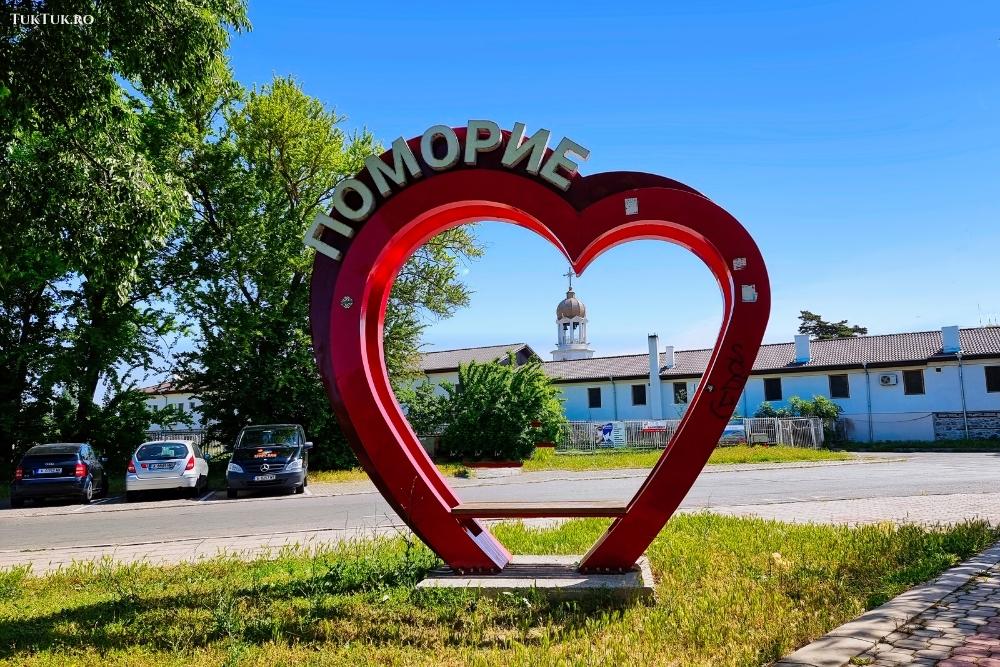
Pomorie is an ancient town founded by Greek settlers in the 5th century, who named it Anchialos (roughly translated – near the salt. We’ll see a little below why). The Bulgarians later changed its name to Tuthom; during the Ottoman occupation, it was called Ahyolu, and since 1934 the town has been called Pomorie, a word derived from the phrase near the sea.
With all the ‘seeds’ planted by the Greeks, not many Greek elements survived in the former Anchialos. Today, Pomorie is a quiet little town of about 14,000 inhabitants with a reputation as a resort where there is none of the nightlife madness of Sunny Beach but rather the relaxation that families with children or those seeking moments of complete tranquillity need. With fewer tourists than in Burgas, Nesebar, or Sunny Beach, Pomorie is also notable for its slightly lower prices than its more “hectic” neighbors.
You are going to Pomorie, on holiday? Here are the best hotels in Pomorie, Bulgaria
There are several tourist attractions in Pomorie (and the surrounding area) that you can visit, the beaches are wide, well-equipped, with fine sand, and close to any hotel (given that Pomorie is located on a small peninsula) and on the level of personal safety things seem to be perfect. However, the resort is by no means a boring place, quite the contrary. So let’s find out what to do and see in Pomorie:
- What to see and do in Pomorie
- You are going to Pomorie, on holiday? Here are the best hotels in Pomorie, Bulgaria
- Map of sights in and around Pomorie (zoom in for details)
- Visit the ancient, mound-shaped Thracian tomb
- Take a trip to St. Anastasia Island
- Spice up your holiday at… the Pomorie Salt Museum
- Enter the fabulous story of Ravadinovo Castle
- Visit the Pomorie History Museum
- Pray at St George’s Monastery in Pomorie
- Take a walking tour of Burgas
- Attend an embers dance performance in the village of Bata
- Visit a fishing village
- Have fun at an aqua park
- Pin it!
Map of sights in and around Pomorie (zoom in for details)
Enjoy the beaches of Pomorie
Of course, Pomorie is primarily a destination for beach, sun, and sea lovers. And you couldn’t argue with those who want that, especially since the Bulgarian coastline offers solid arguments for spending relaxing days.
The peninsula on which Pomorie is located has some beautiful and well-equipped beaches with all the facilities you could need. As I was staying at the Penelope Palace Hotel at the entrance to the southern part of the peninsula for the two days I spent here, I had the South Beach mainly under my eyes.
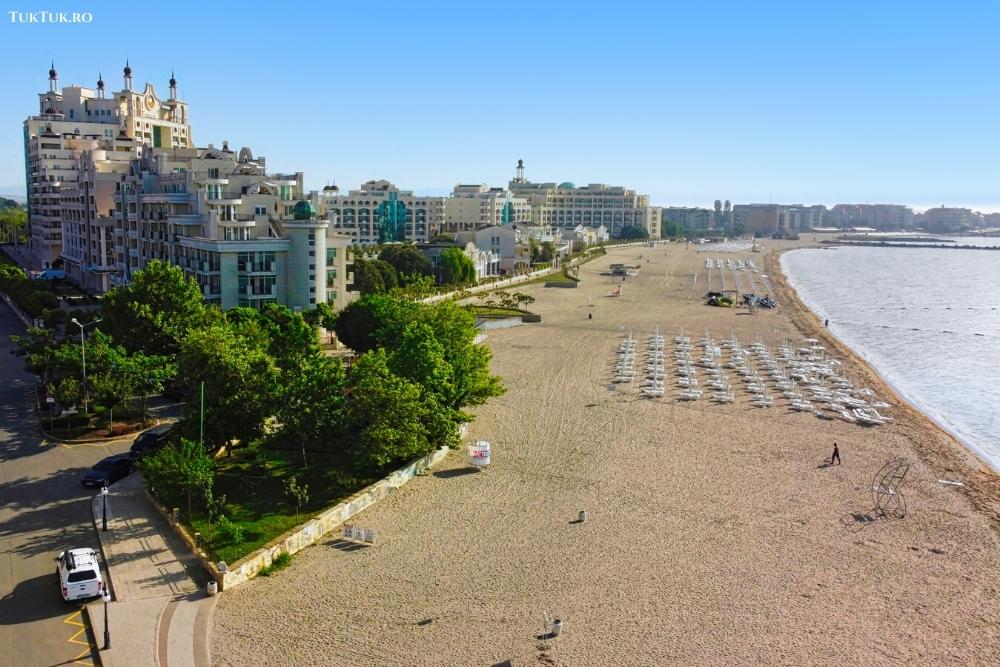
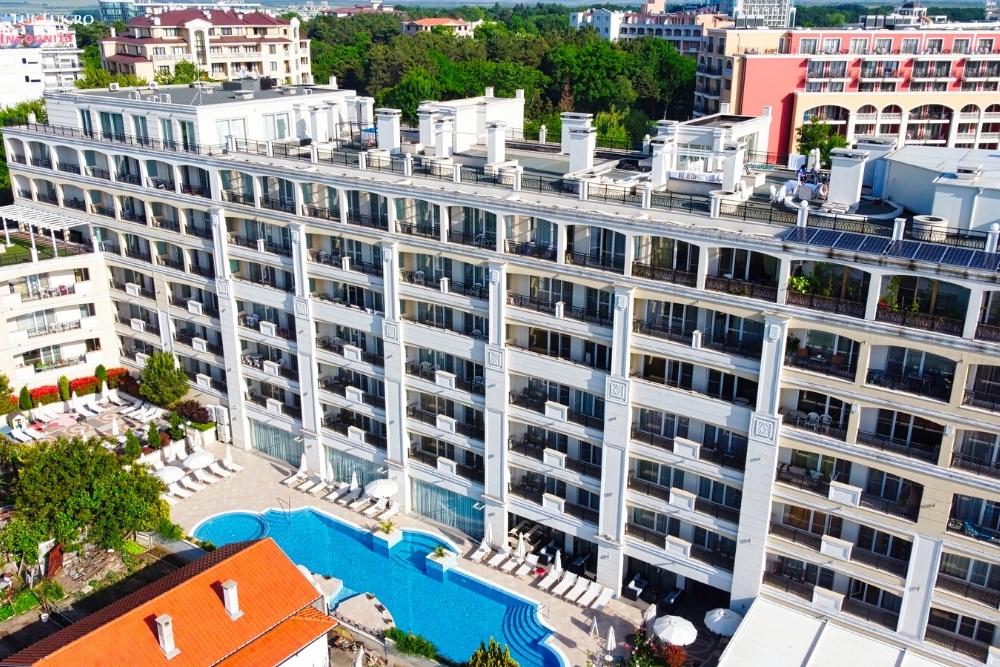
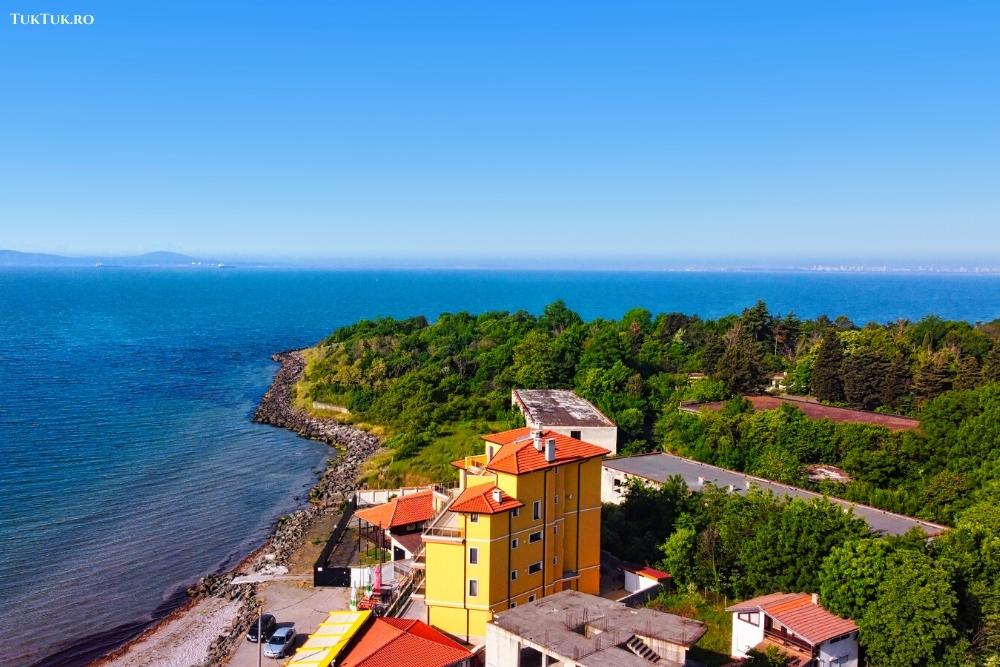
South Beach is a modern, wide (and long – it’s about 1km long) beach and, according to some sources, one of the most eco-friendly beaches in Bulgaria. The sand is fine and dense, the sea water is warm and crystal clear, sun loungers are decently priced, and there are plenty of “free” beach areas, there are changing rooms, a beach volleyball court, and there is a bunch of cafes and terraces along the edge of Pomorie’s South Beach.
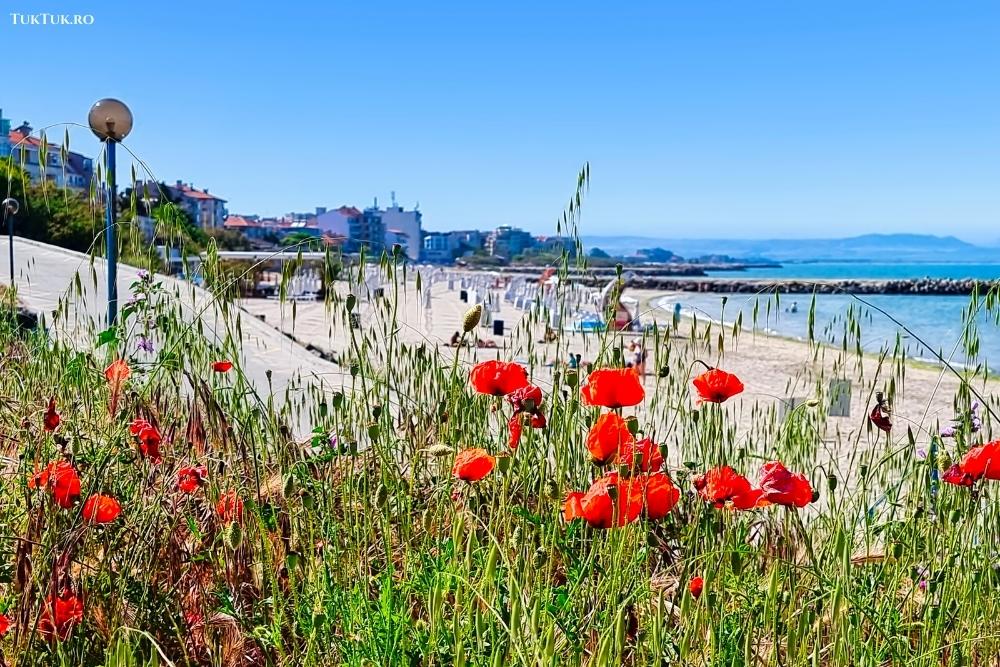
Pomorie’s other beaches are East Beach and Central Beach. These come almost in succession to each other, and, unlike South Beach, here the sand is a slightly darker color. The beaches are equally well equipped, the sea water is warm and, especially in the off-season, very clear. There are also changing rooms, lifeguards, sun loungers and umbrellas, cafés, and terraces. The total length of the two beaches is about 2 km.
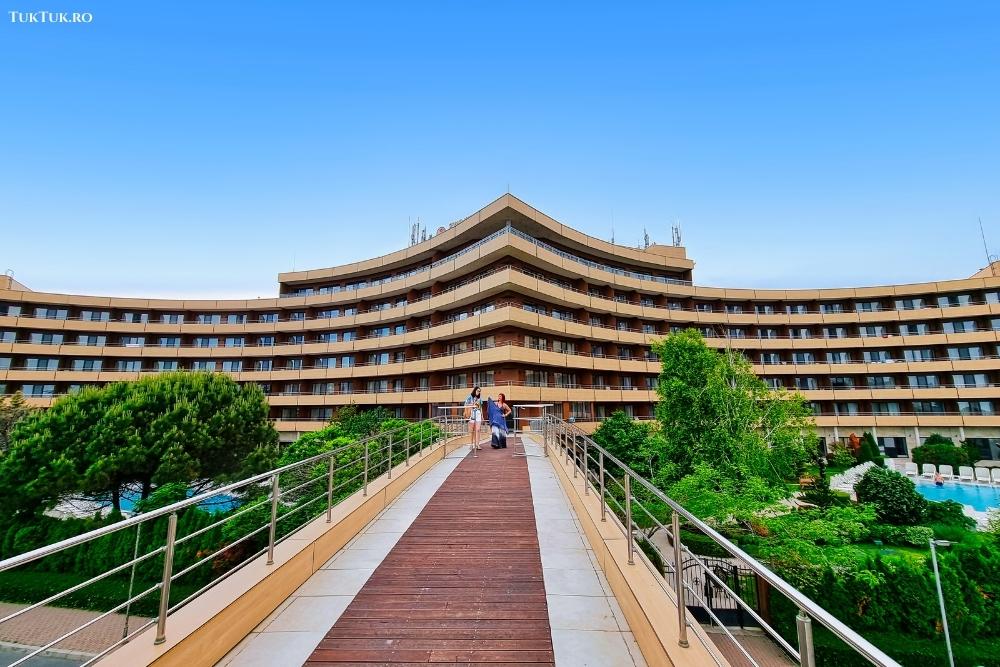

There is no clear boundary between the two beaches. Still, basically, the Central Beach is the one right next to the 5-star Grand Hotel – Medical Spa (on the shore of Pomorie Lake), which I visited and which I can say is a pinnacle of luxury on the Bulgarian coast (according to some rumors, it might even be the best hotel on the Bulgarian coast). And which, among other things, has a fabulous spa.
Visit the ancient, mound-shaped Thracian tomb
On the road from Pomorie to Burgas, near the Sunset Aquapark, there’s an important tourist attraction that’s almost a must-see: the ancient Thracian Tomb, shaped like a mound (outside) and a mushroom (inside). The tomb dates back to the 2nd-3rd centuries AD and is thought to have served as the mausoleum of a wealthy family from Anchialos (the ancient name for Pomorie), where various pagan religious rituals were performed.
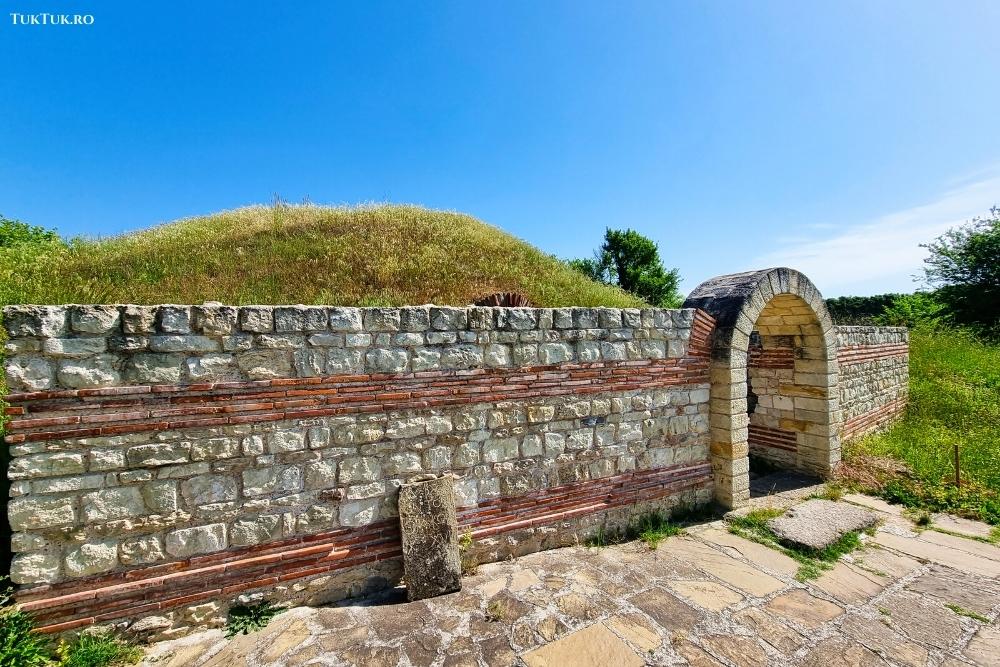
Viewed from above, the mound that appears on the outside doesn’t reveal much about what you’ll discover when you step onto the 22-meters-long corridor that opens into a circular room, 12 meters in diameter and 5.50 meters high. Built of limestone and bricks bonded with mortar, the tomb has a hollow column in the middle, 3.30 meters in diameter, which widens in length and in which there was most likely a spiral staircase, which has not survived. On the circular wall inside, there are five niches in which urns containing the ashes of those burnt inside the central column were placed. None of any decoration or painting on the wall has survived.
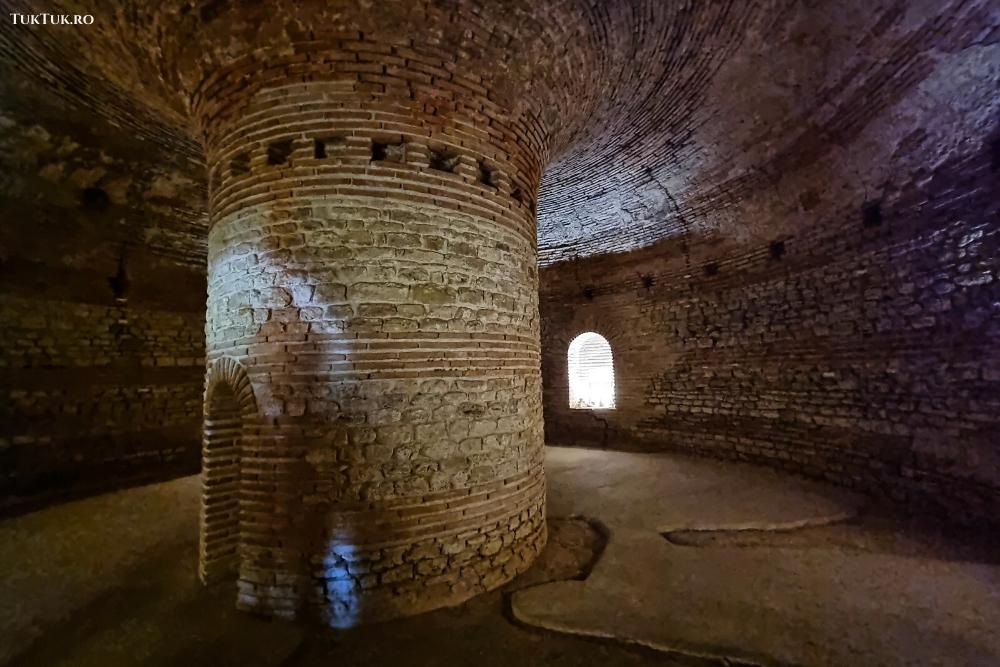
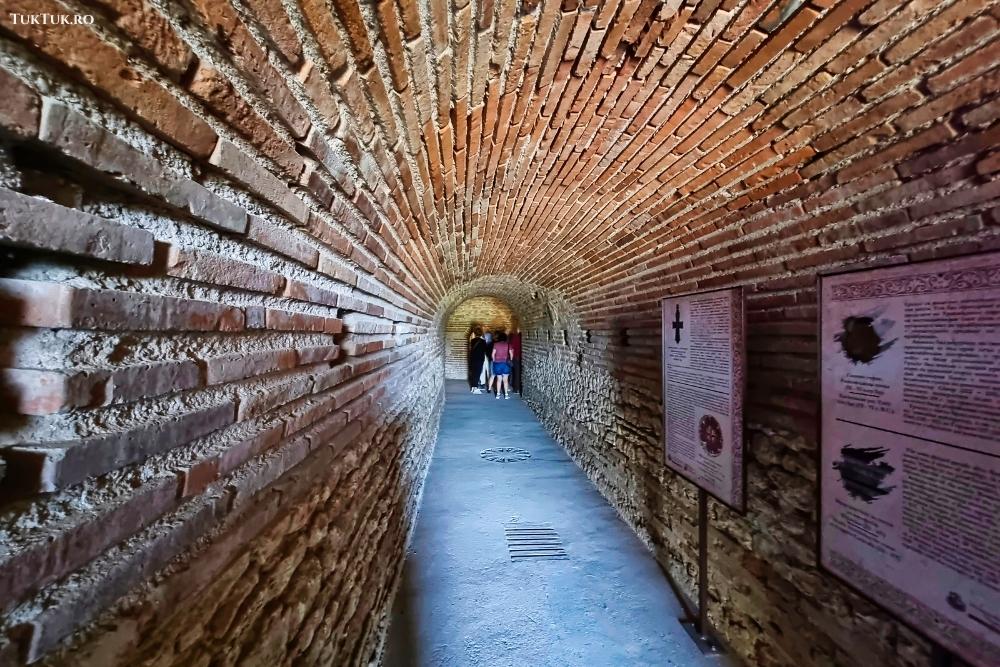
Unique in the Balkans (similar constructions have been found in Rome, but the external shape indicates a Thracian achievement), the tomb impresses with the way it was built, the stability of the mushroom-shaped dome being astonishing, a real mystery to architects. The Thracian tomb in Pomorie can be visited from April to October from 9 am to 5 pm, with an entrance fee of 3 leva.
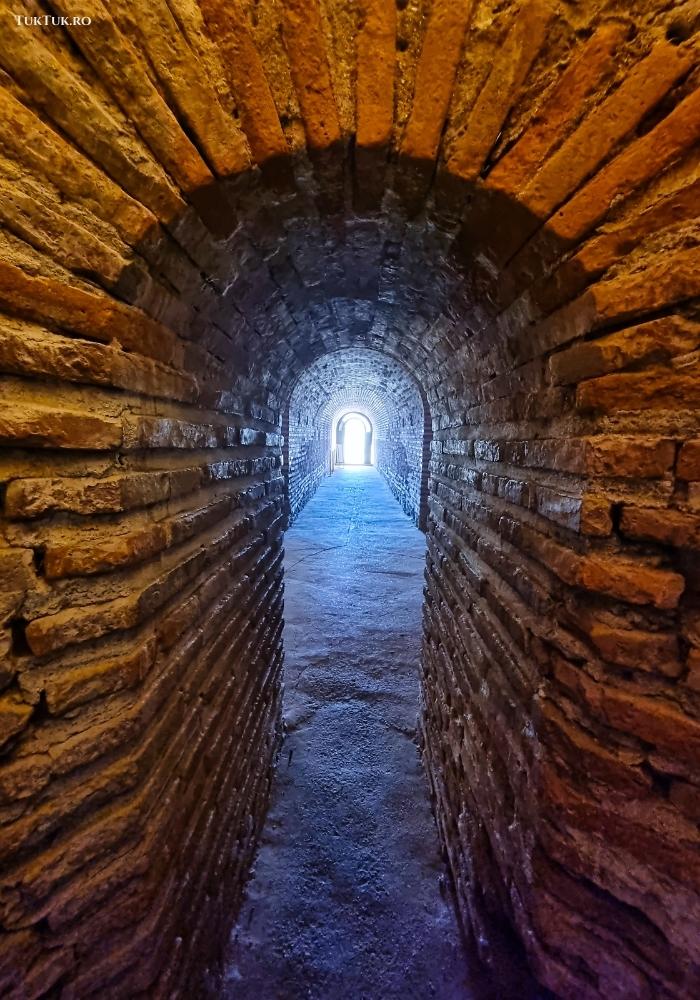
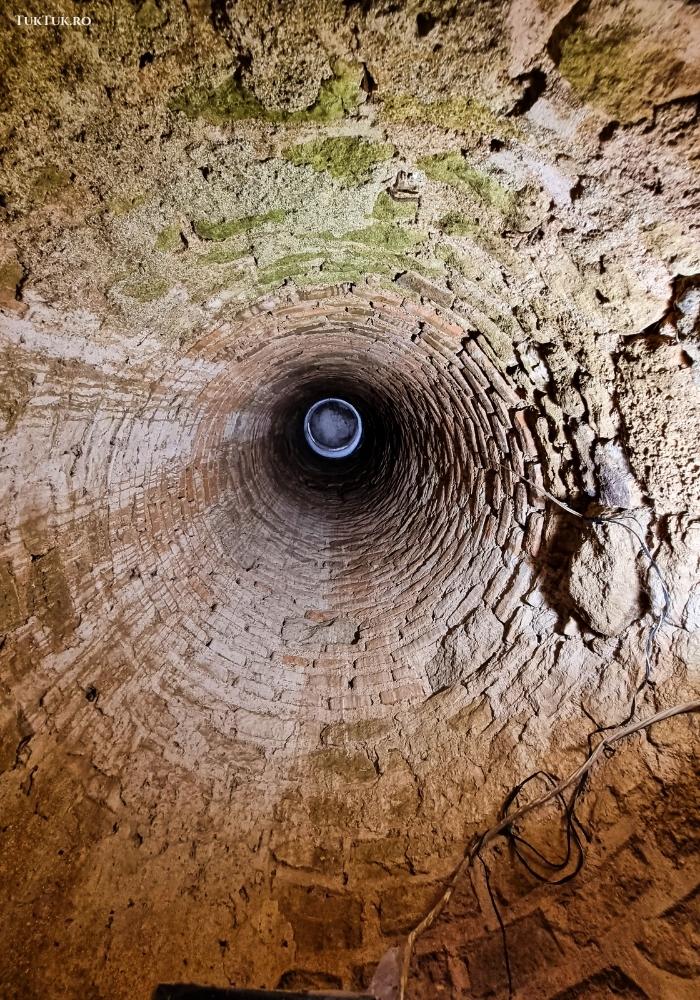
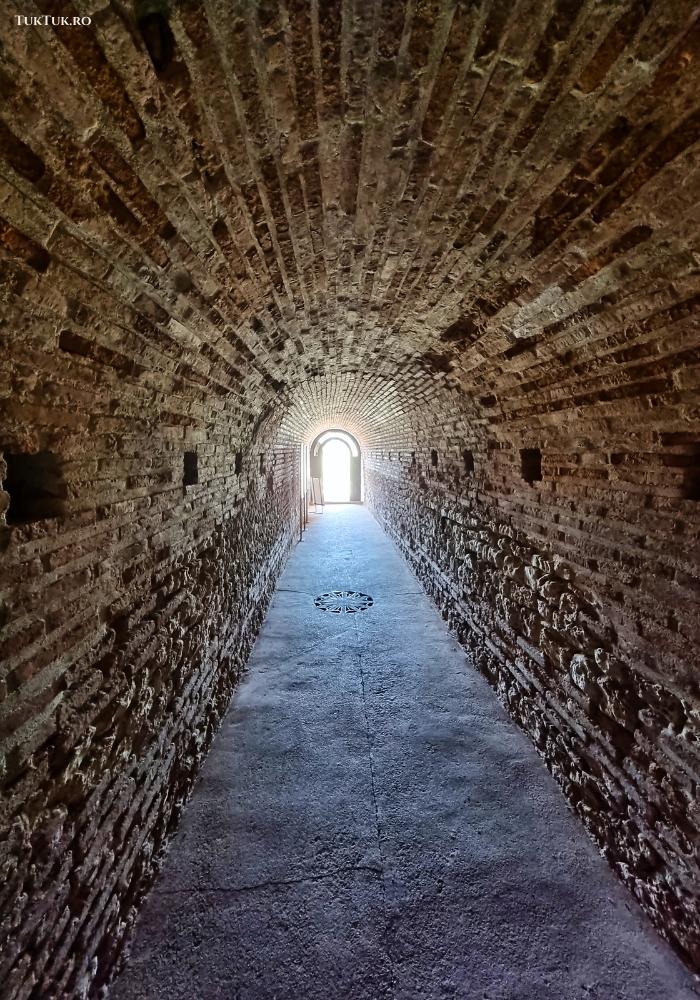
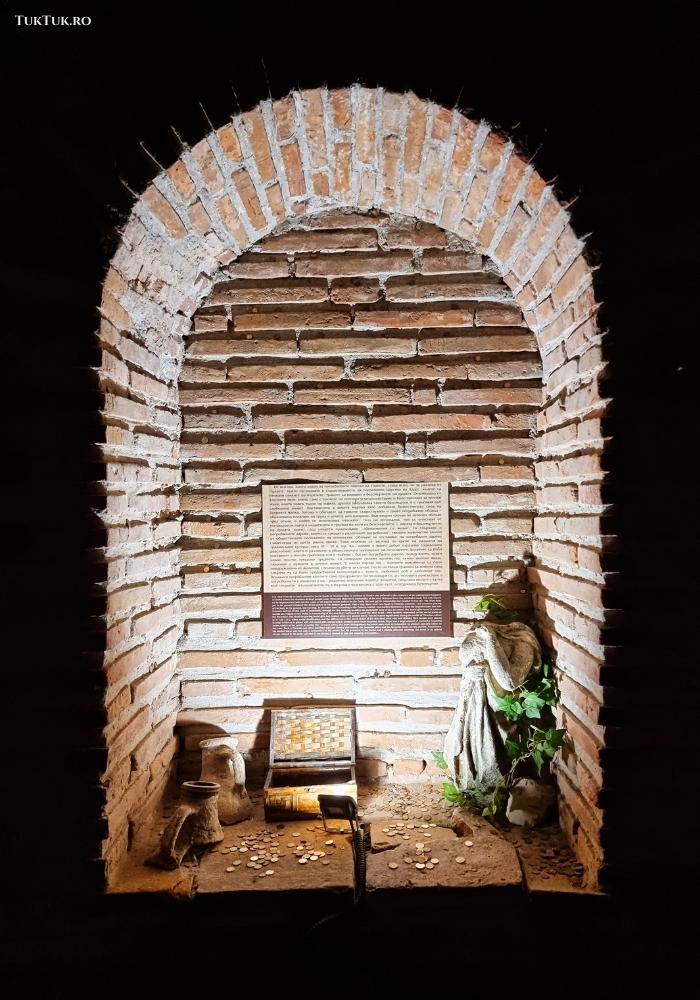
Take a trip to St. Anastasia Island
The Bay of Burgas holds many pleasant surprises. One of them is the St. Anastasia island, a “pebble” of land dumped 6.5 kilometers off the coast of Burgas. Emerging from the eruption of a volcano and shaped by storms and waves, St Anastasia covers an area of one hectare and is the only inhabited island on Bulgaria’s coastline.
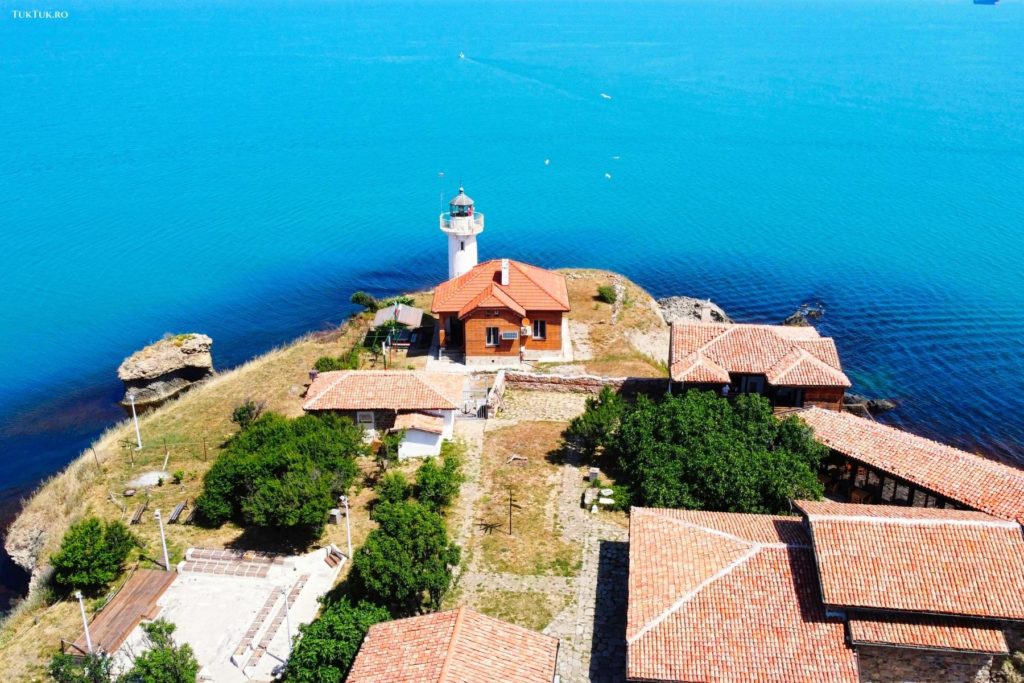
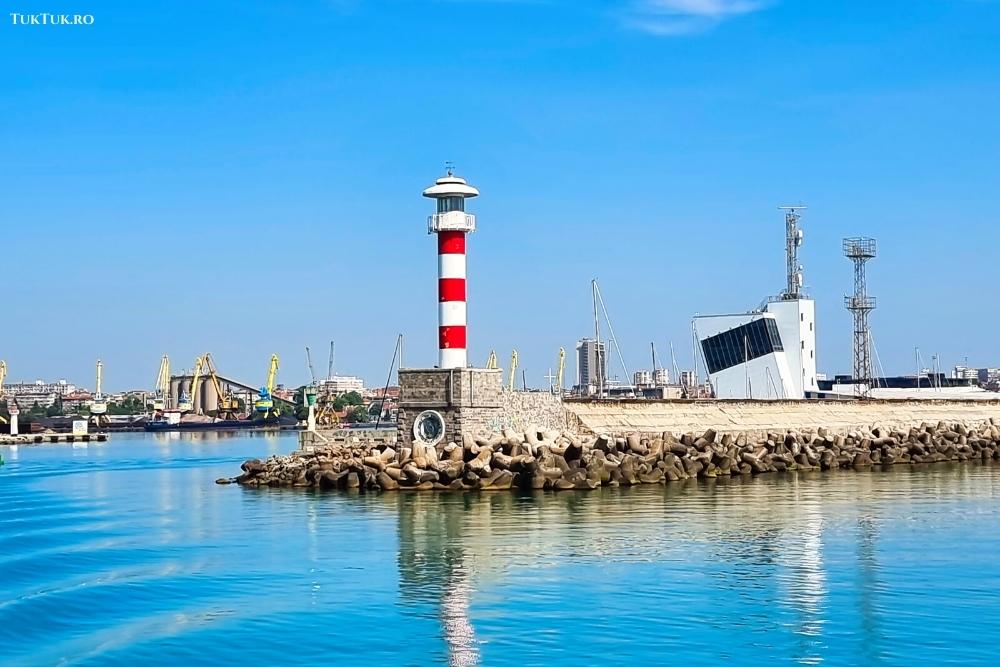
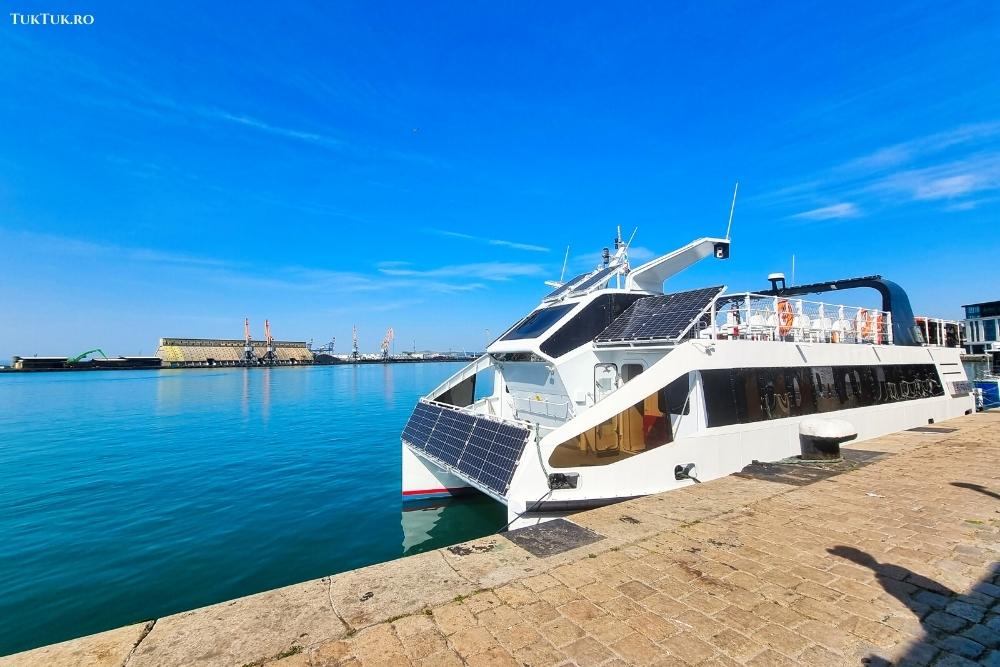
To reach it, you will have to take a short boat trip from the port of Burgas (the departure point is Magazia 1). The trip takes only half an hour, and the time you spend on the island before returning to the mainland is two hours. It’s enough time to learn about the place in the small museum, admire the monastery, walk from one end of the island to the other, take photos and eat fresh fish at the local restaurant.
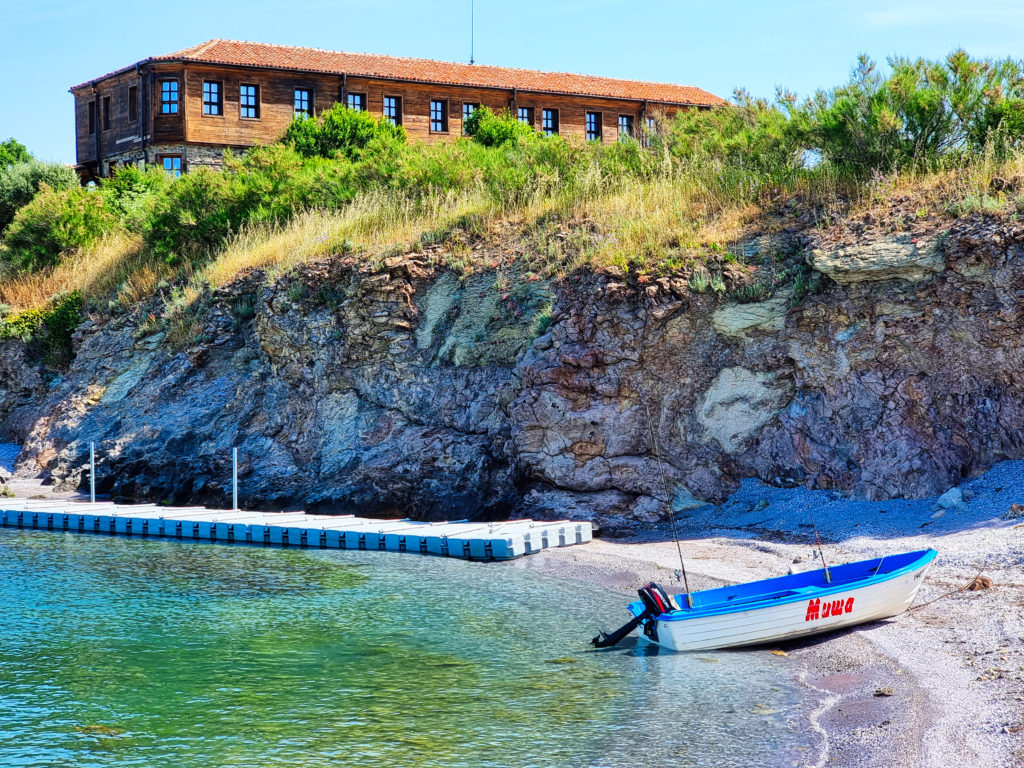
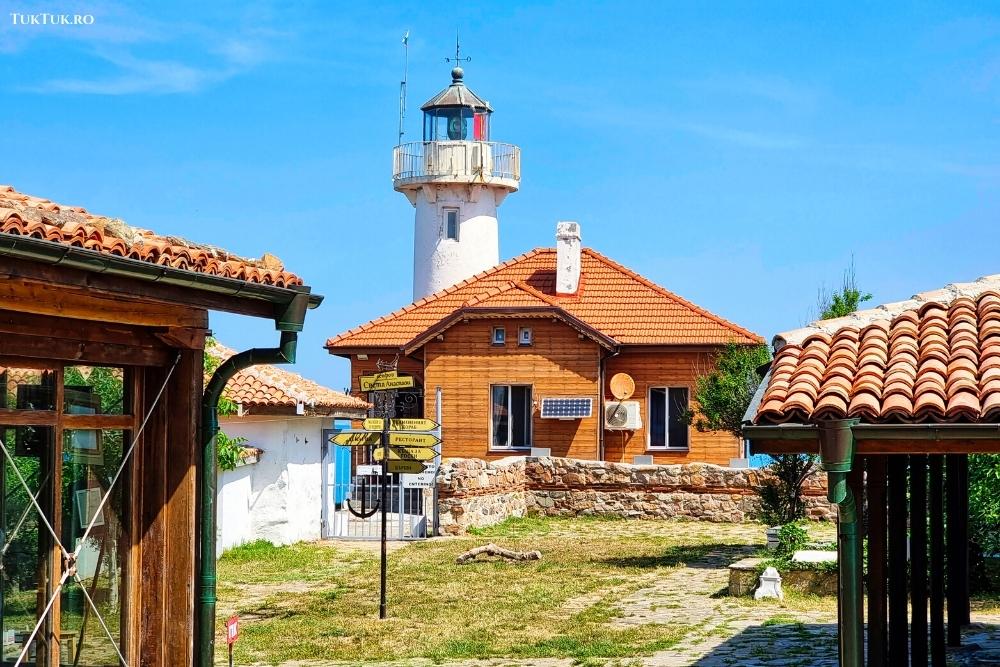
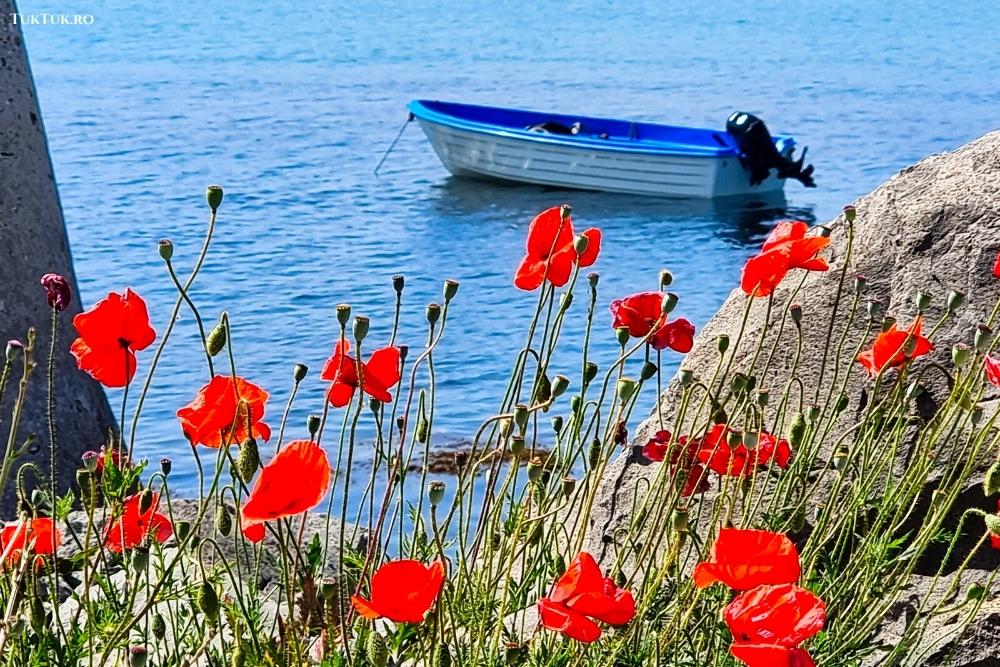
The place is named after the former monastery of St Anastasia, which had existed since the Middle Ages and was rebuilt in the 18th-19th century (following numerous fires and pirate attacks), only to be abandoned in 1923 when the island was turned into a prison, becoming the ‘Bulgarian Alcatraz’.
In 1925, a group of 43 political prisoners, communists and anti-fascists, escaped and fled to the Soviet Union. After the communists came to power in Bulgaria, the island’s name was changed to the Island of Bolsheviks in their honor. There is even a film, made in 1958 by the Bulgarian director Rangel Valchanov (On the Small Island), in which this history is told. Speaking of films, St Anastasia has also been the subject of a film production starring Letitia Casta – The Island.
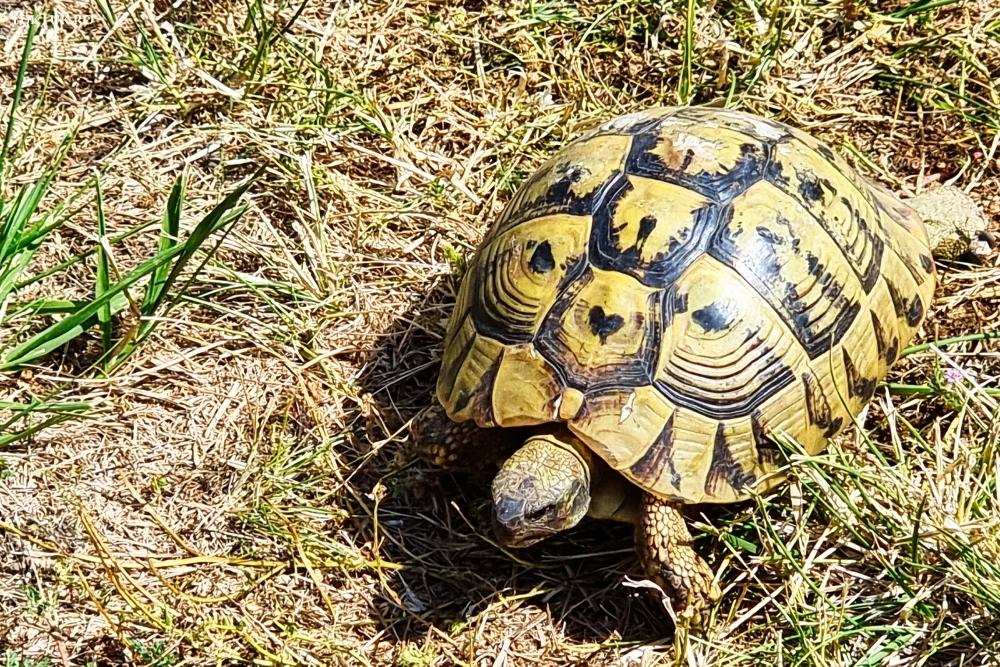
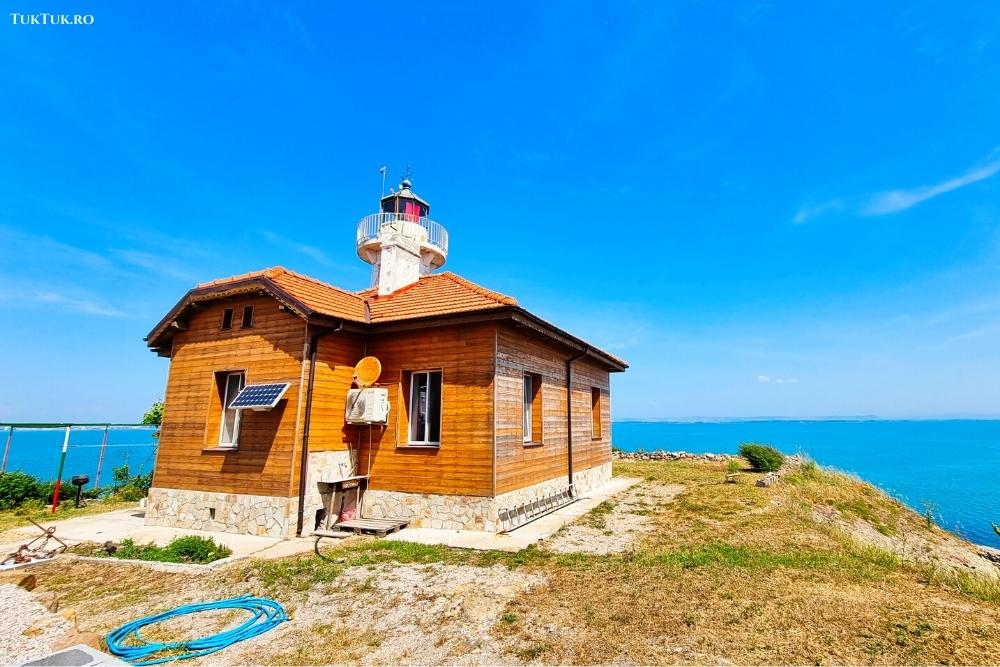
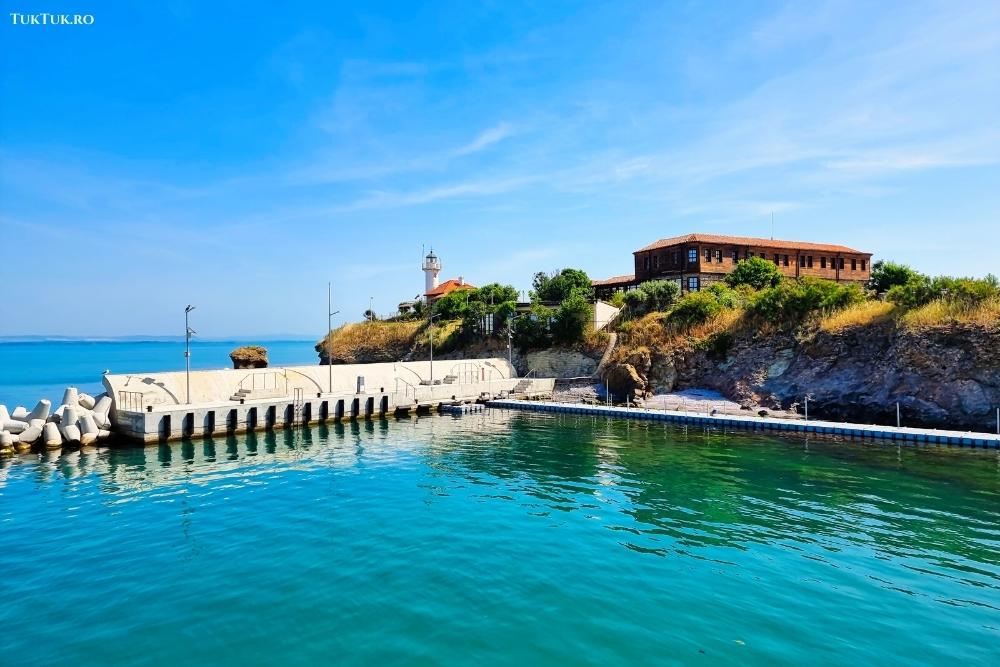
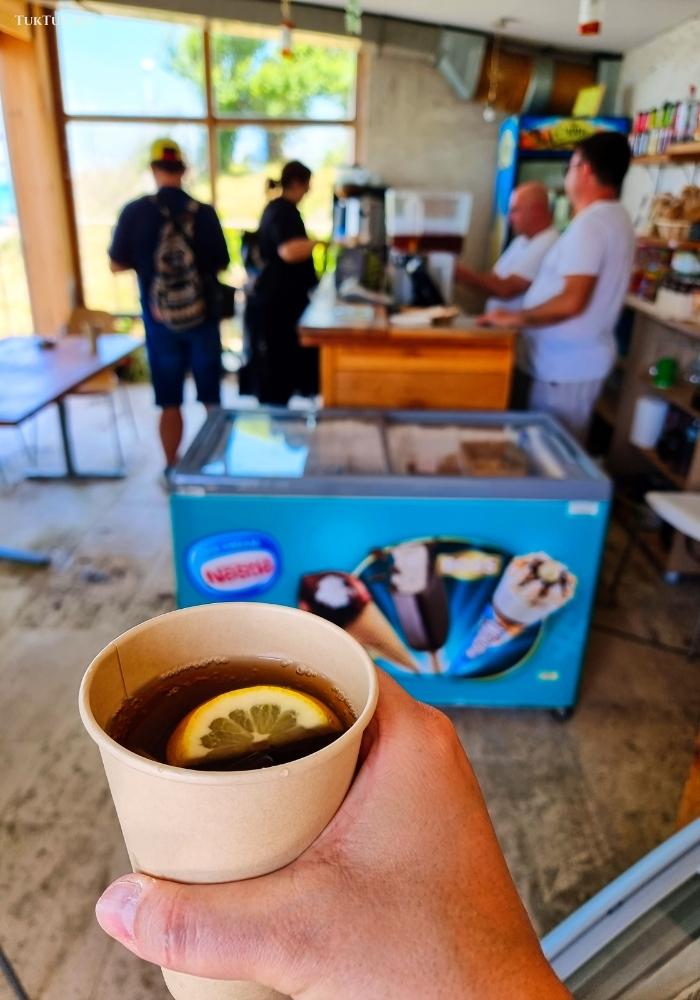
On the island, you can spend the night in a medieval monastery chapel, enjoy traditional local recipes at the restaurant mentioned above, or refresh yourself with a wonderful herbal iced tea in the Lekarna café. The two hours I spent here were extremely relaxing, and I must admit I was overcome by the bohemian feeling this small place gives you, full of positive energy.
Spice up your holiday at… the Pomorie Salt Museum
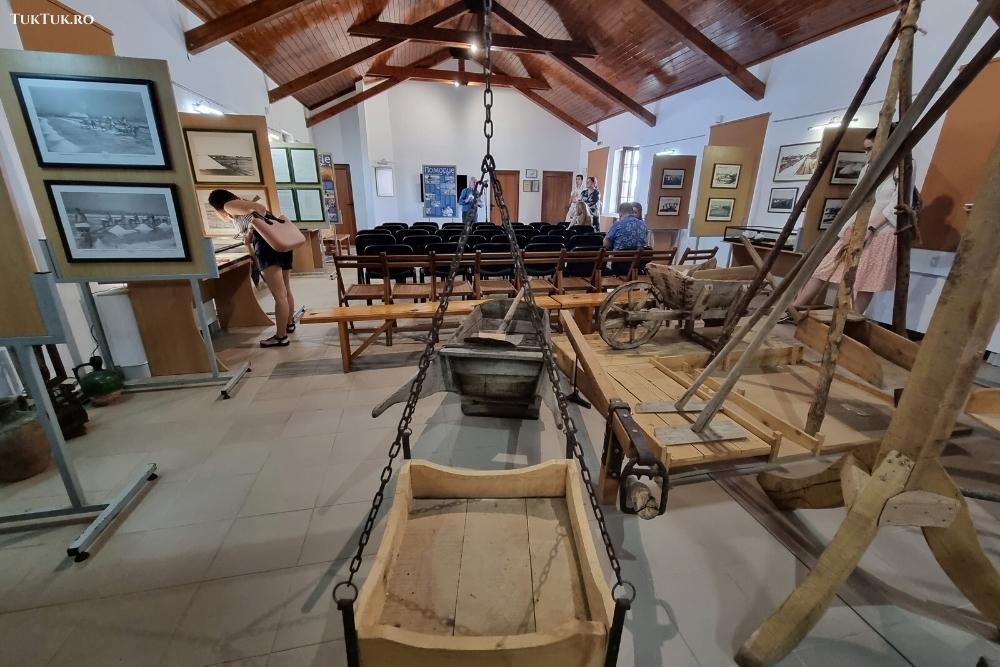
Since ancient times, Pomorie has been an important center for producing salt extracted from seawater and solar evaporation. Some sources mention that salt mines in the Pomorie region existed even before the city was founded (5th century BC), when salt was extremely valuable, nicknamed ‘white gold’.
So a Museum of Salt was needed, which opened in 2002 on the southern shore of Lake Pomorie, near the Old Town (behind the stadium). The open-air museum (plus the associated building) covers a large area, and the adjacent salt works still produce salt today, using the same technology used centuries ago.
Visitors can learn more about this technology in the museum building and admire a collection of photographs and documents related to the history of salt production in Pomorie and the salt trade in Bulgaria.
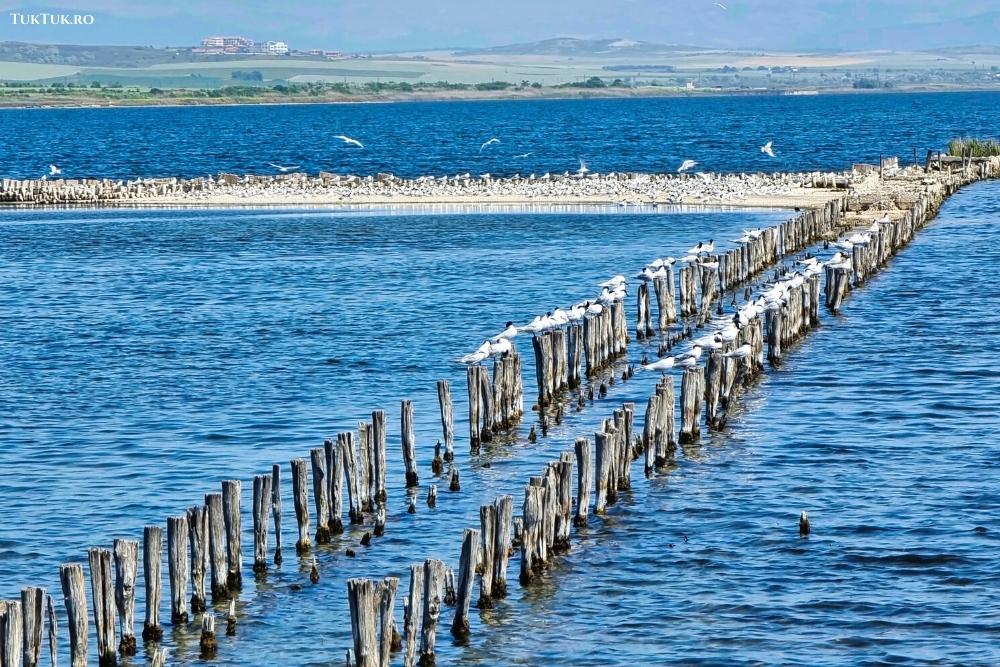
Of particular interest is the Pomorie Lake (8.5 square km), where bird lovers can delight in the massive presence of 260 species of birds. A real paradise for bird watchers, the lake is located right on the migration route of the birds on the Via Pontica. Colonies of swallows and other species have nested on the small artificial islands on the lake, continuously making a deafening noise. Monitored by video cameras, the birds can be watched by visitors on monitors inside the tourist centre near the museum.
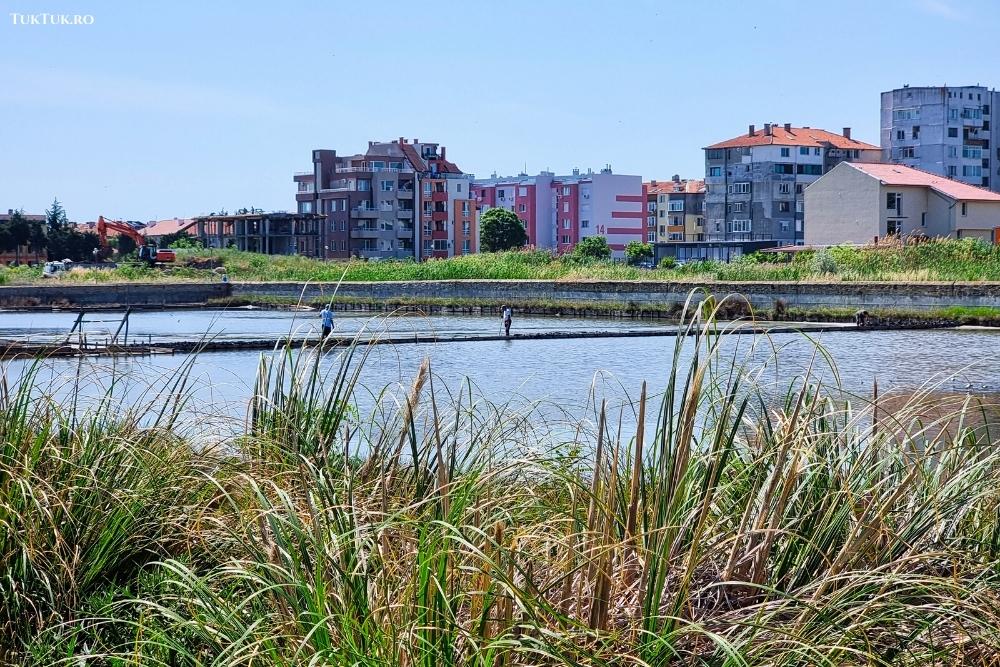
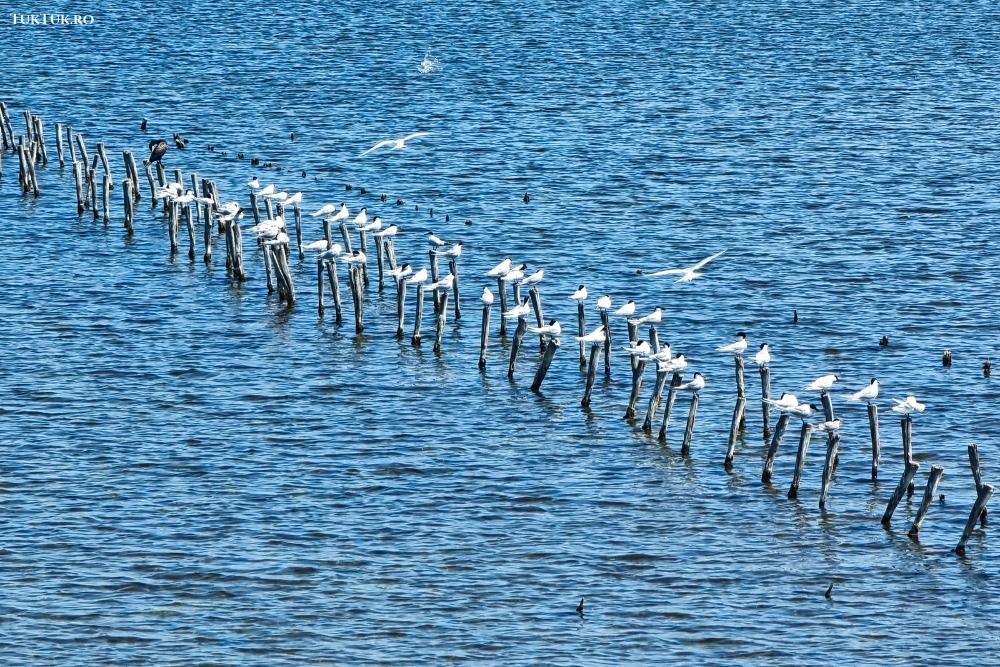
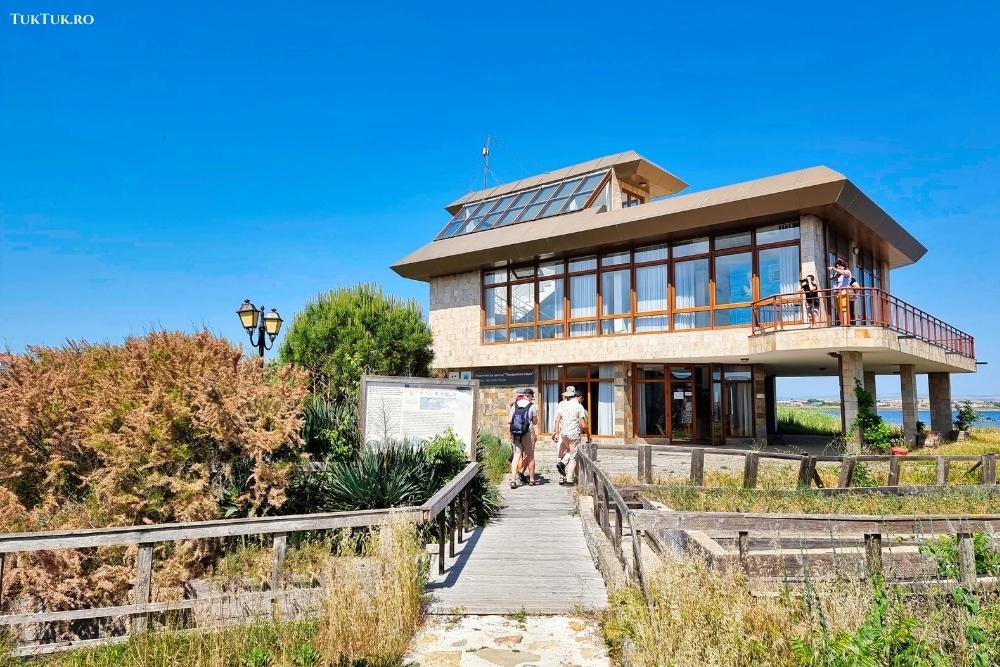
And while we were talking about the lake, during my visit to the museum, I saw many people doing on its shores the same activity we see in Romania, on the shores of Lake Techirghiol: mud smearing. Pomorie is a famous mud therapy center, whose fame has spread beyond the borders of Bulgaria. In fact, most of Pomorie’s hotels have spa centers where visitors can enjoy mud therapies, as its therapeutic properties are undisputed.
Enter the fabulous story of Ravadinovo Castle
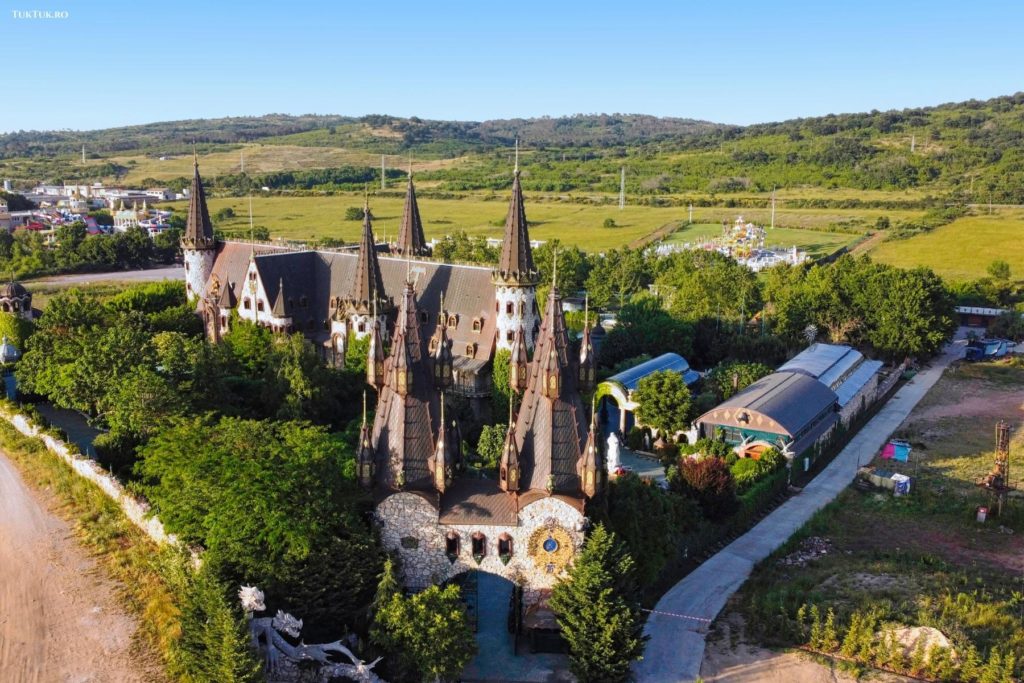
Everyone has their follies and dreams. From these sometimes incomprehensible cocktails of the human mind, things emerge that, at first glance, seem like achievements hatched by aliens. After all, however, such people have taken humanity further, each in his own way. In Bulgaria, in the village of Ravadinovo near Sozopol, a man named Georgi Kostadinov Tumpalov, with red boots, shorts, and the allure of Richard Branson has seen his dream come true: he has built the playground he imagined as a child – a castle from the Middle Ages that looks just like the “real” fairy tales. He’s called it “In Love With the Wind”, and you’ll definitely be left gawping and staring when you cross its threshold. This combination of a fairy tale with serial fantasy, horror movie, and fascinating Las Vegas kitsch is the most extraordinary creation I’ve seen since I imagined myself living in a world created by the Grimm Brothers.
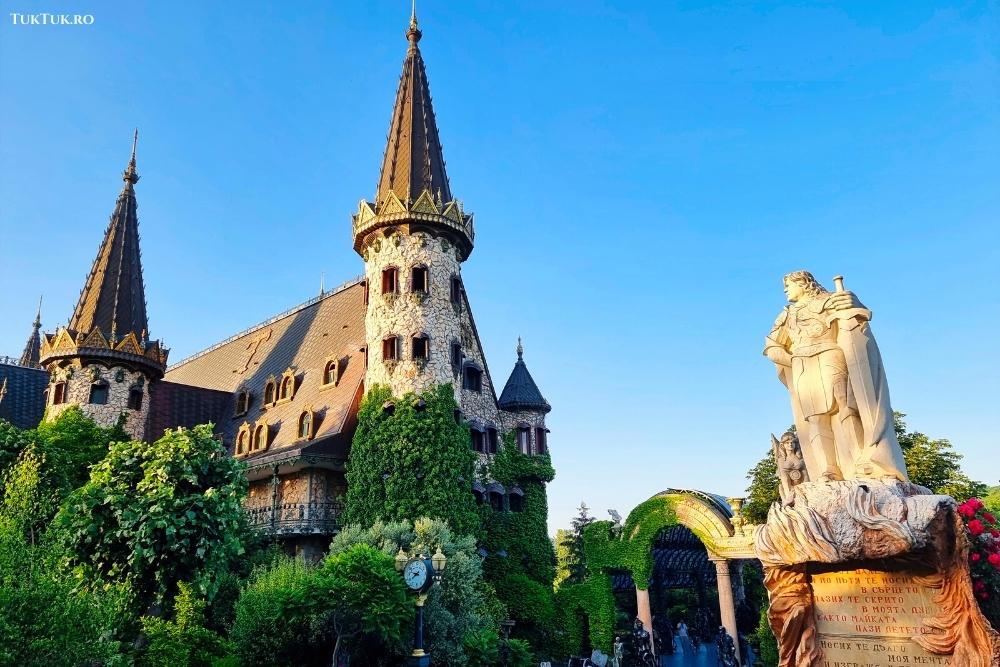
I don’t want to think about the millions of euros needed to build something like this (the pictures cannot tell the whole image). Still, the fact that in 2018 the place was declared Bulgaria’s number one tourist attraction and that, over the years, it has received numerous design awards says a lot.
The Ravadinovo Castle(whose construction started in 1996) was built entirely from 20,000 tons of stone quarried from the bowels of the Strandzha Mountains. The castle’s main building (which is shaped like a cross), chapel, wine cellar, art gallery, and other points of interest are made mainly of natural limestone. The stones contain traces of micro diamonds, which makes the castle change color – in the morning, it has pink hues; during the day, it turns white, and at the full moon – it glows. According to tests carried out by the Bulgarian Academy of Sciences, the age of the stones is between 250 and 270 million years.
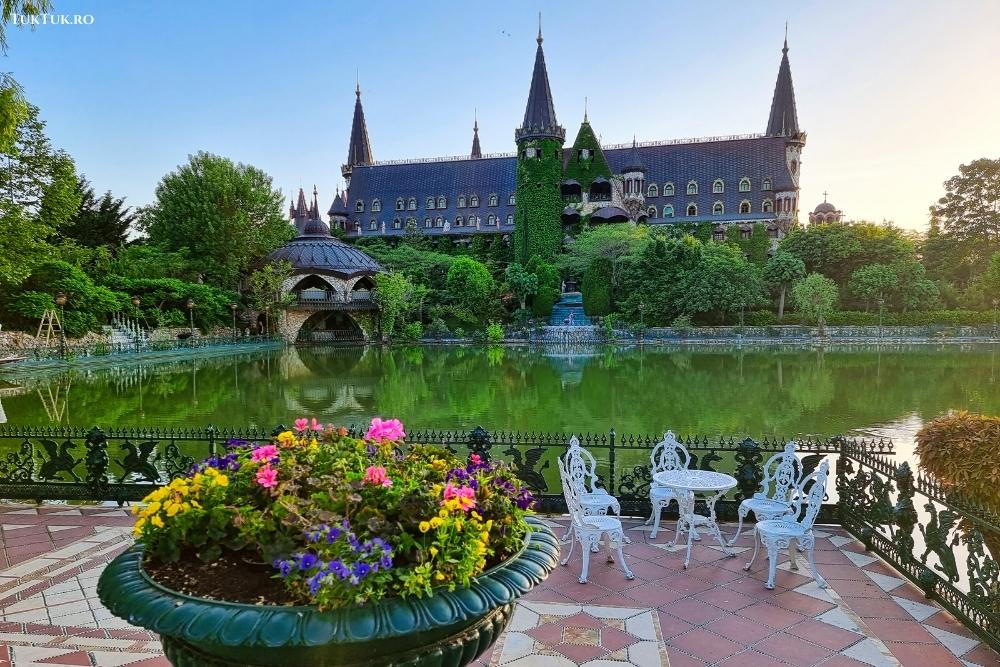
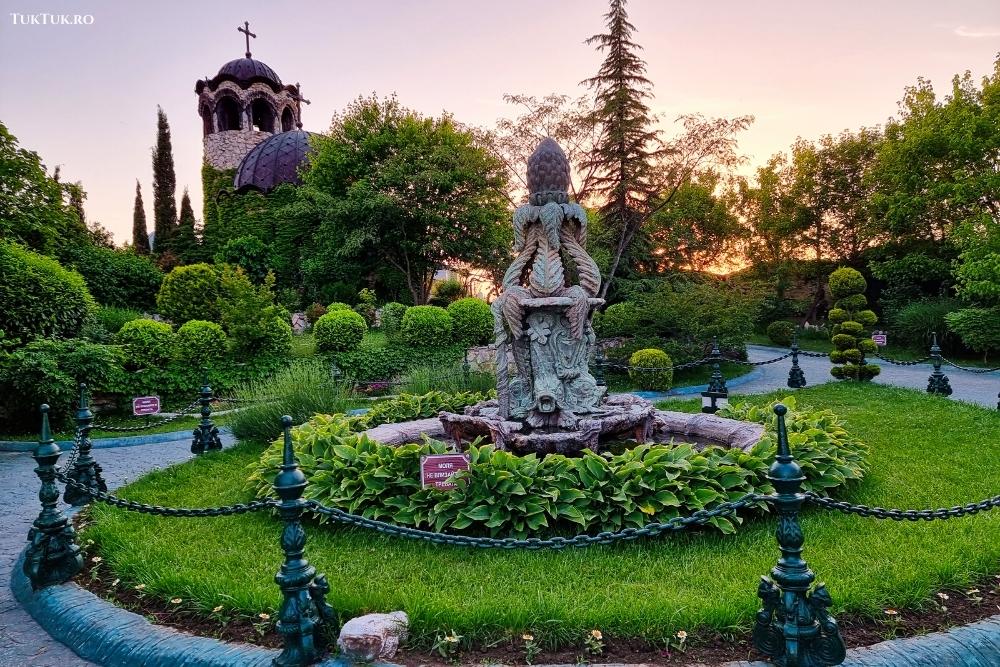
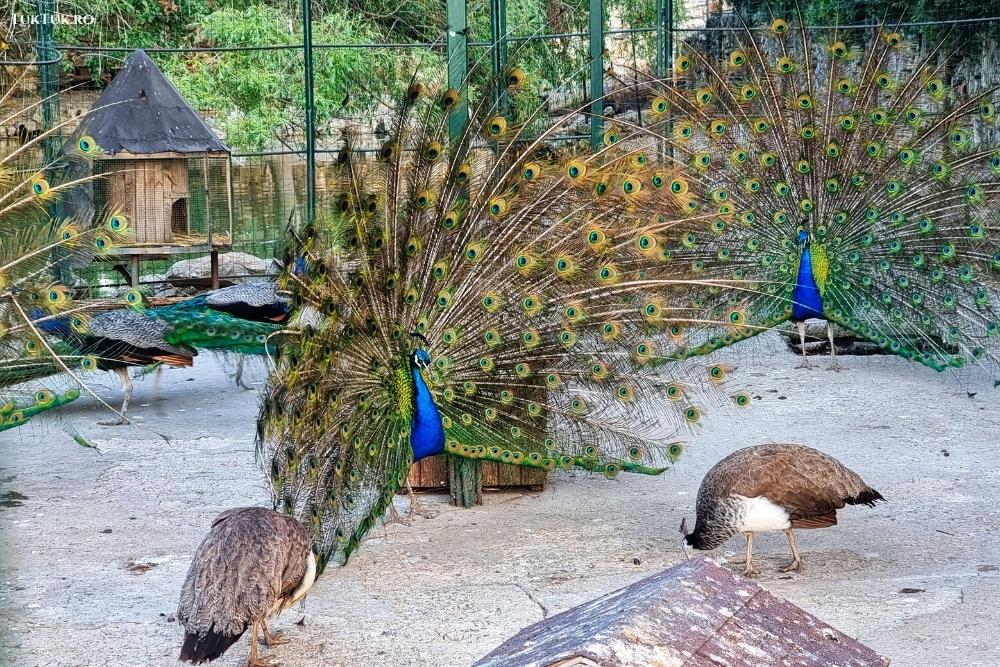
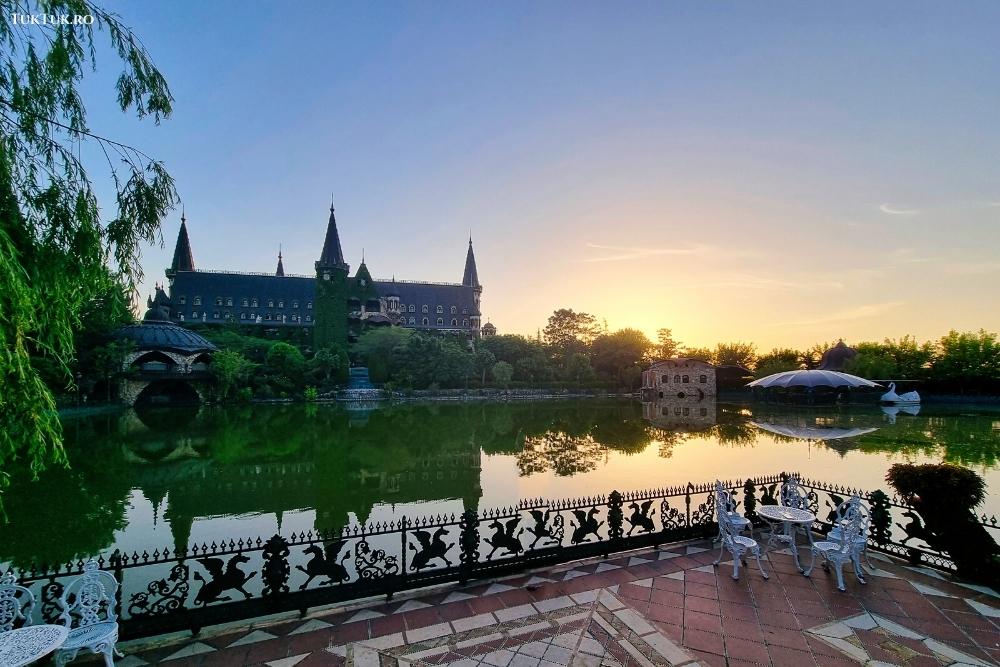
All other building materials are all-natural, such as marble and granite. No artificial materials have been used, the main idea being that the building should last forever. The roof is made of copper, with a total weight of 53 tonnes. The artificial lake is 5 meters deep and more than 3000 species of flowers and trees grow in the park. Ravadinovo Castle will certainly be considered a work of art in a hundred years. And nowadays it is just as certainly a tourist attraction you shouldn’t miss if you want to live every happy child’s dream: to live in a beautiful castle.
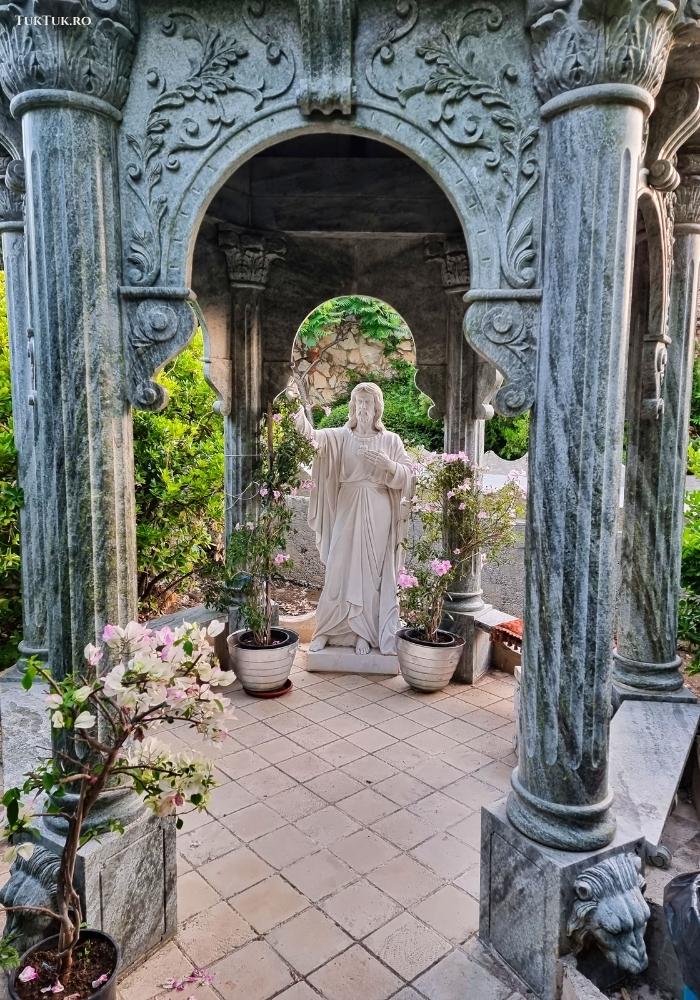
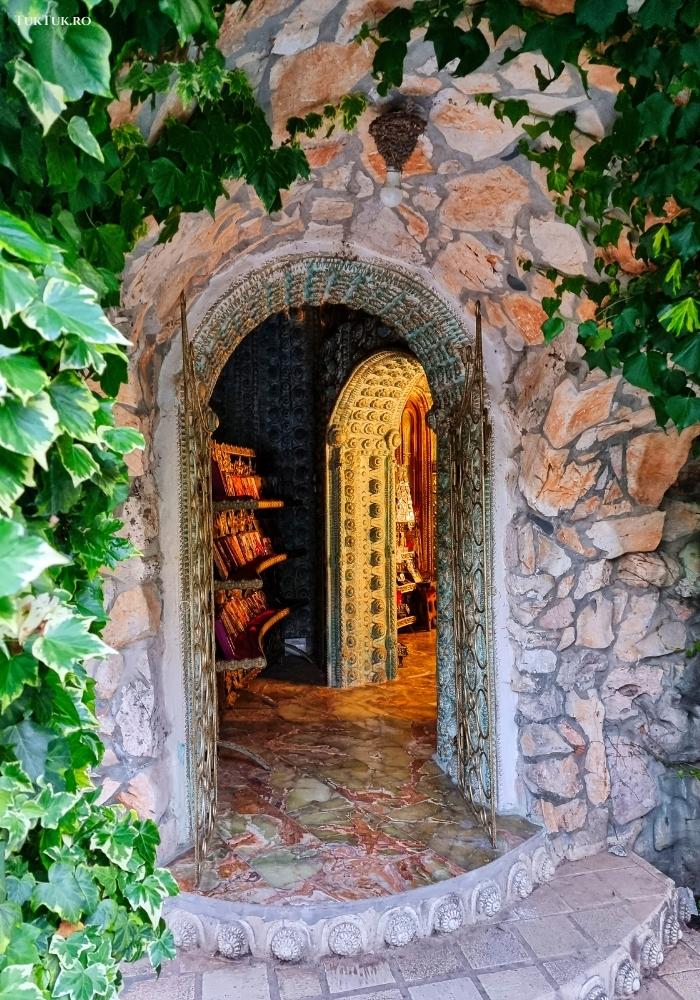
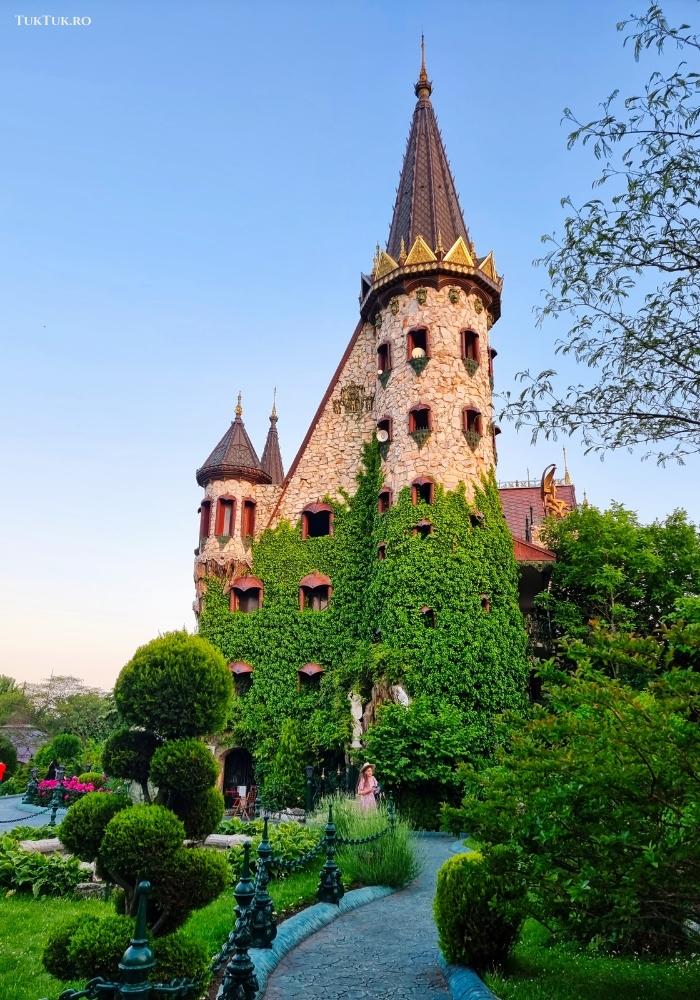
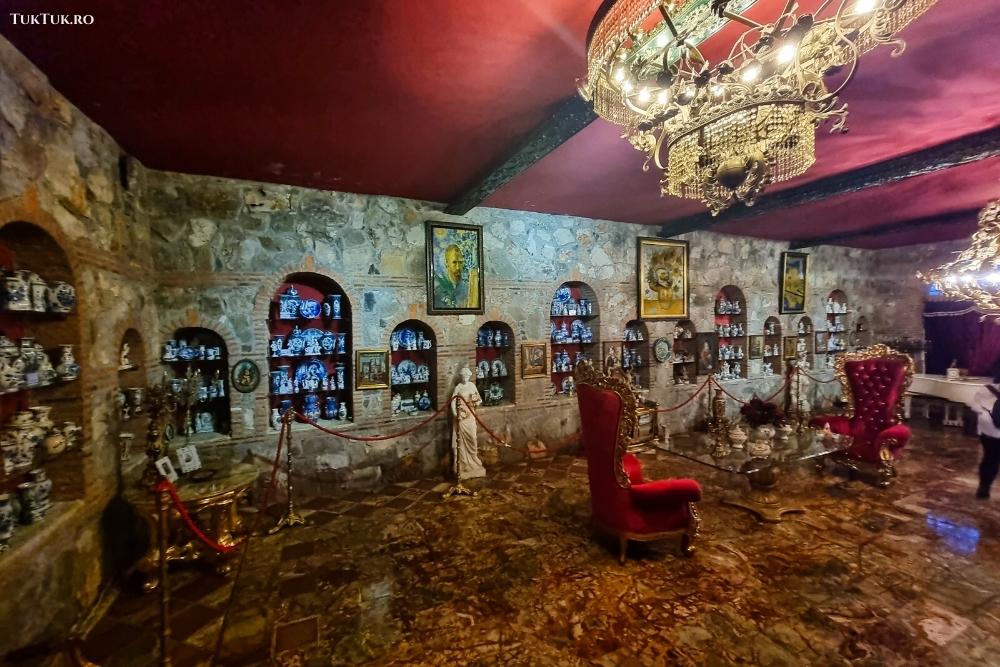
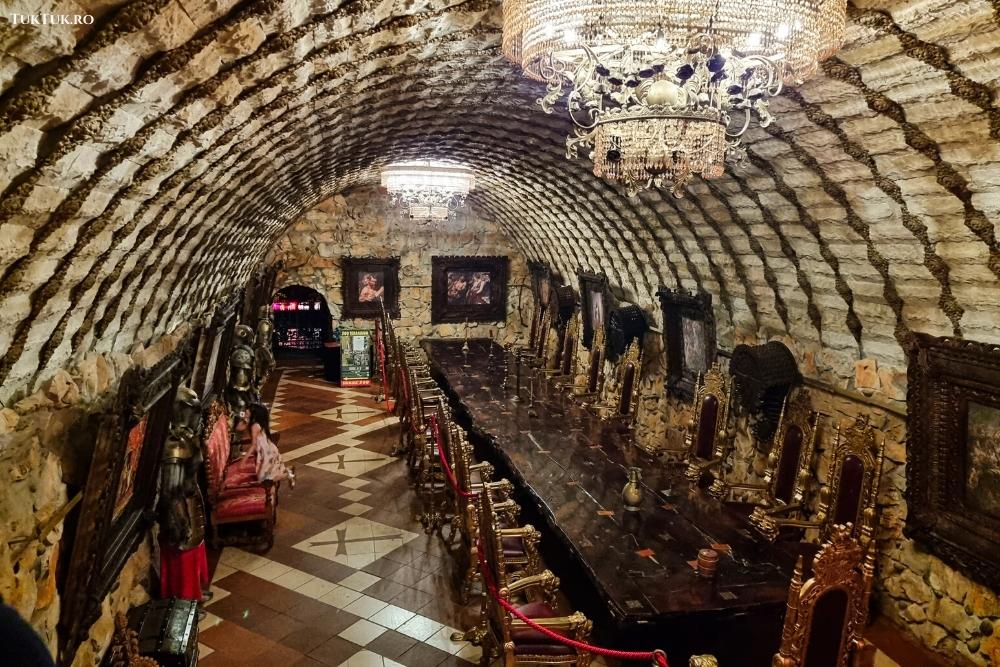
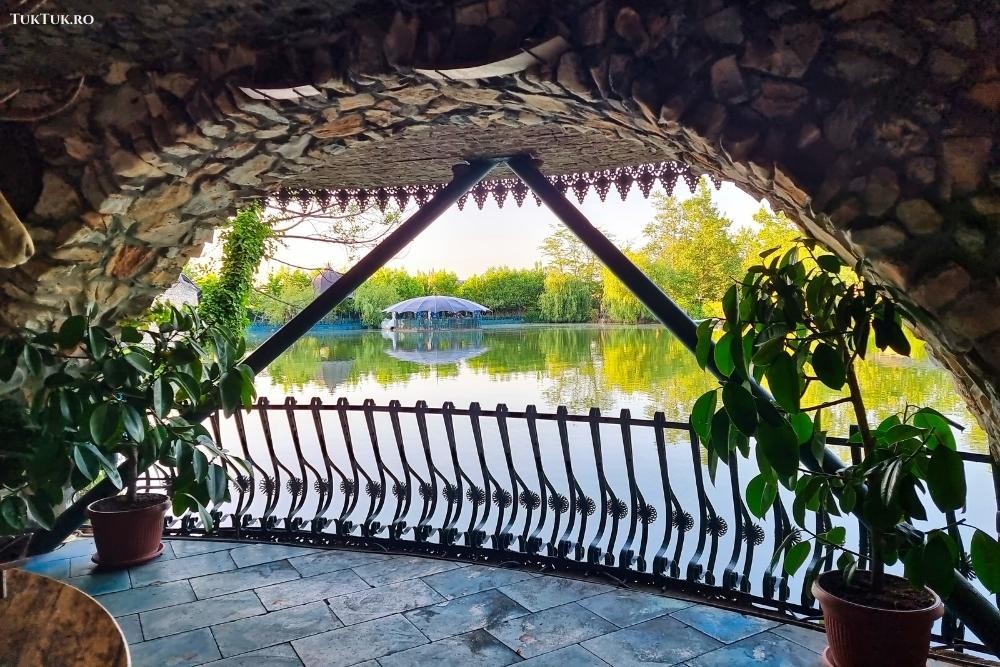
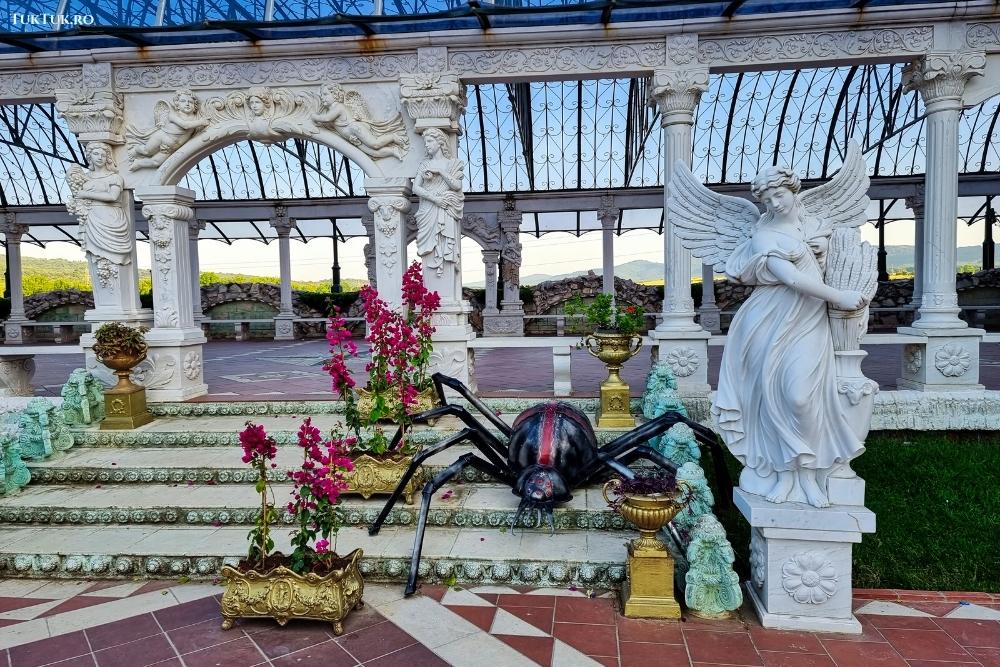
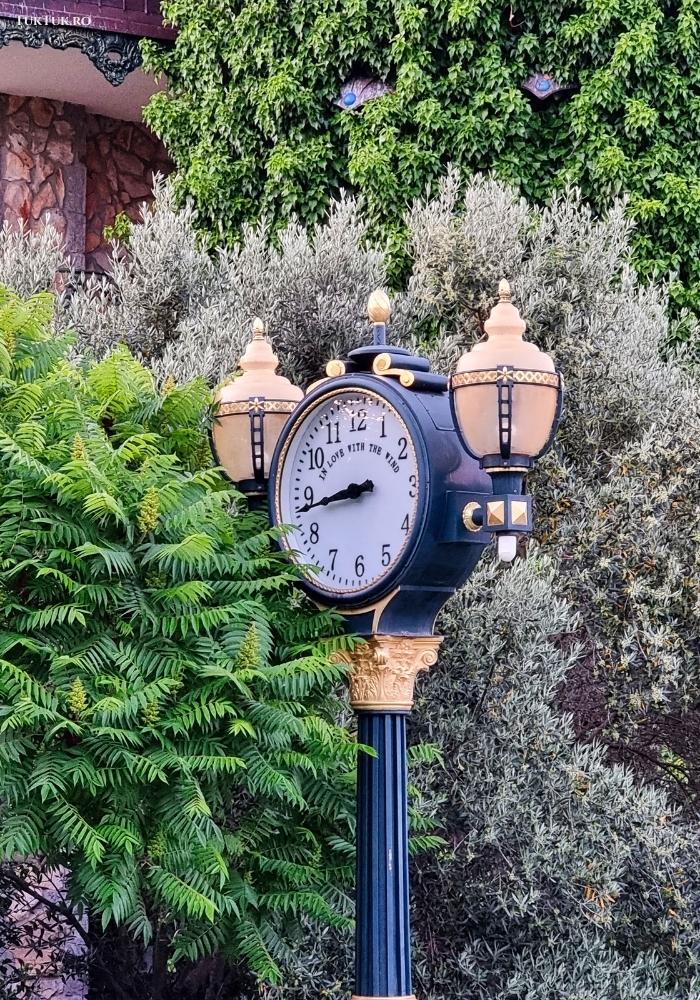
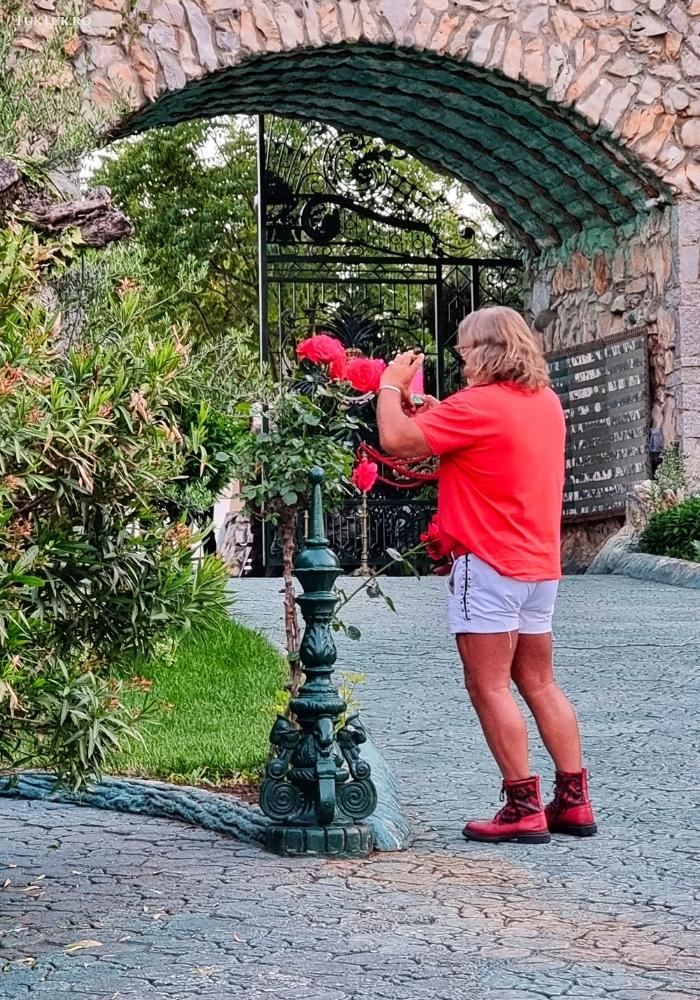
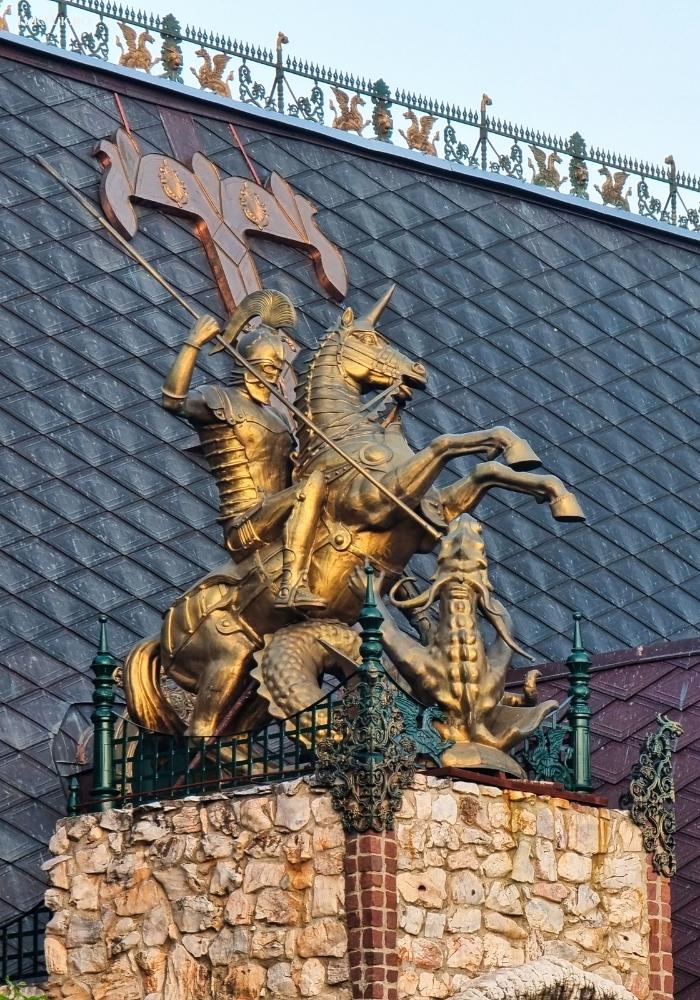
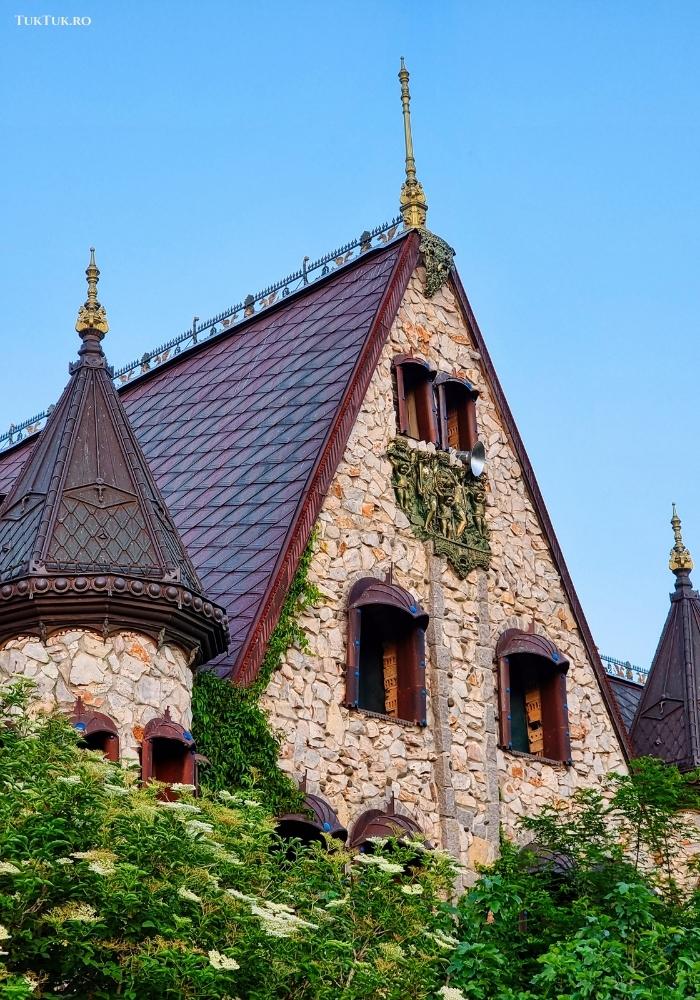
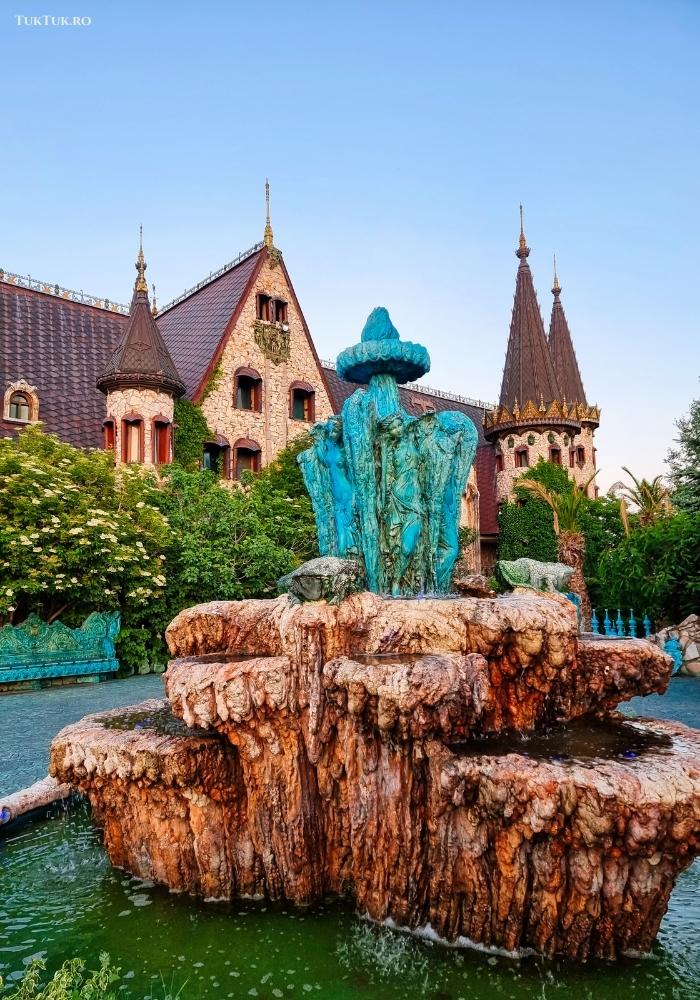
Ravadinovo Castle can be visited seven days a week and is open from 8 am to 8 pm. The entrance ticket costs €10 (a 10% discount is available when buying online).
The fabulous Ravadinovo Castle:
Visit the Pomorie History Museum
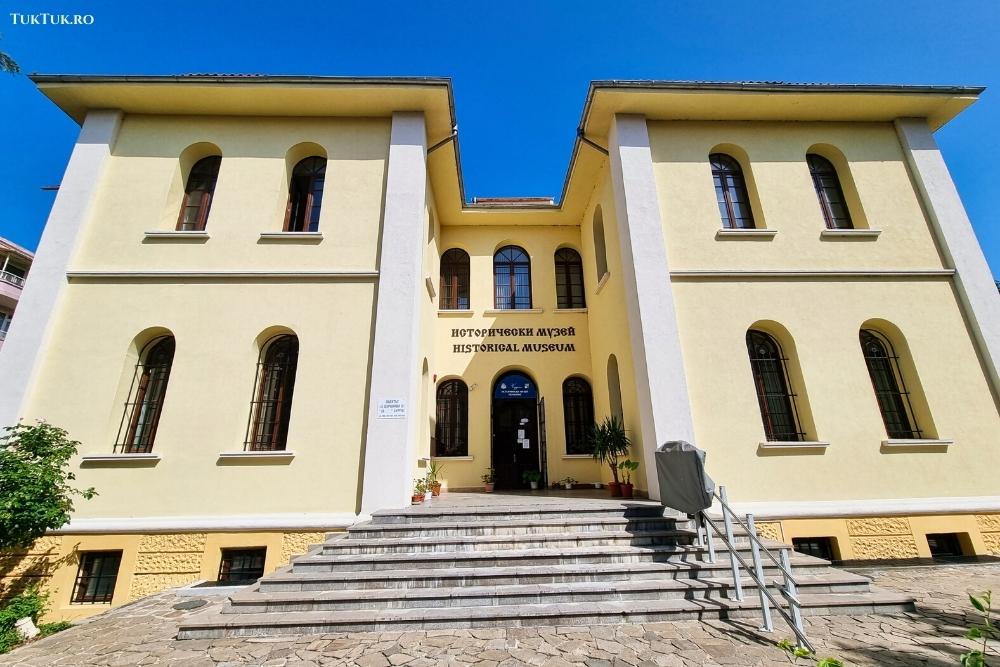
I don’t know if anyone coming to Pomorie for a “hot” summer holiday would plan to visit a museum. But, assuming that among sea and sun lovers, there are also history lovers, they can allocate an hour of their time to cross the threshold of the Pomorie History Museum.
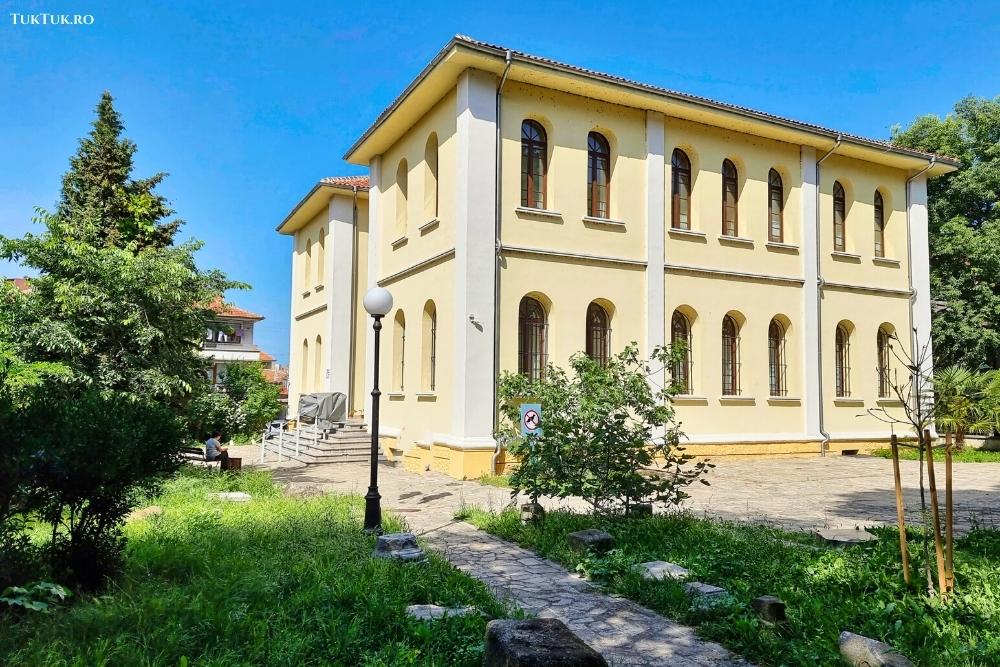
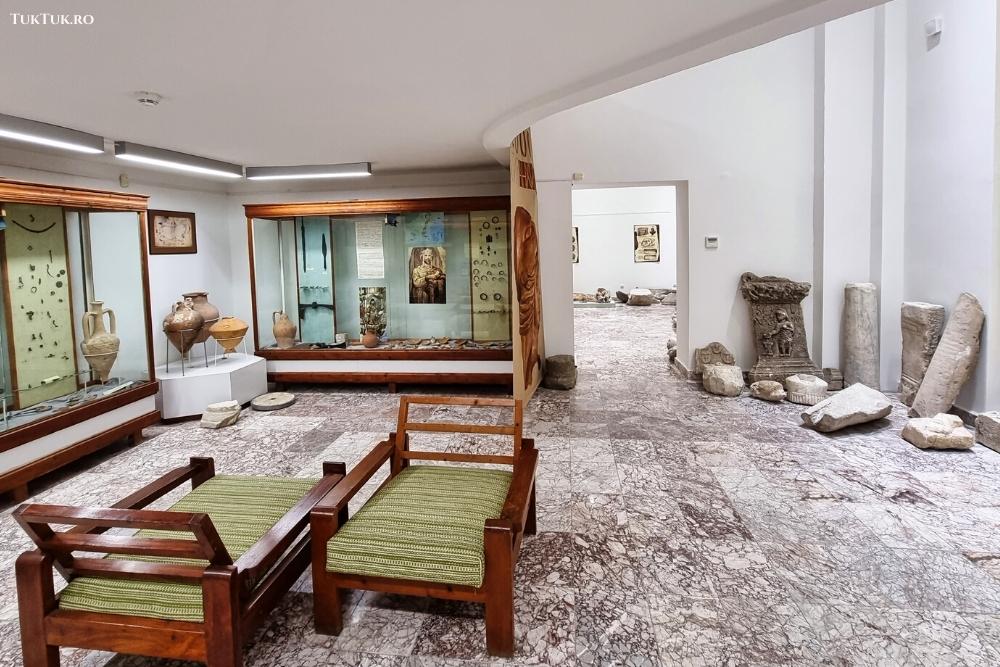
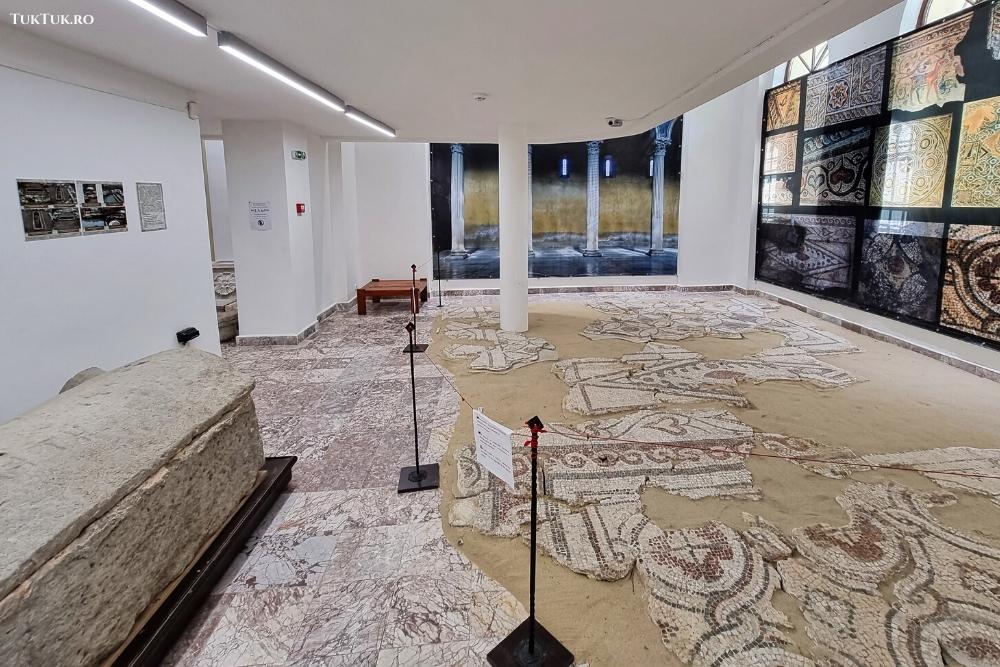
As Pomorie has a lot to do with history, visiting this museum will prove enjoyable. The building located in the old part of the town is itself of special importance, being a monument of architecture with local significance. In its halls are exhibits of archaeology, ethnography, and recent history. Here you can learn about life in the Pomorie region since ancient times, and the museum halls also contain objects that “speak” of the rich diversity of the culture of the people of Pomorie in the 19th and 20th centuries.
Pray at St George’s Monastery in Pomorie
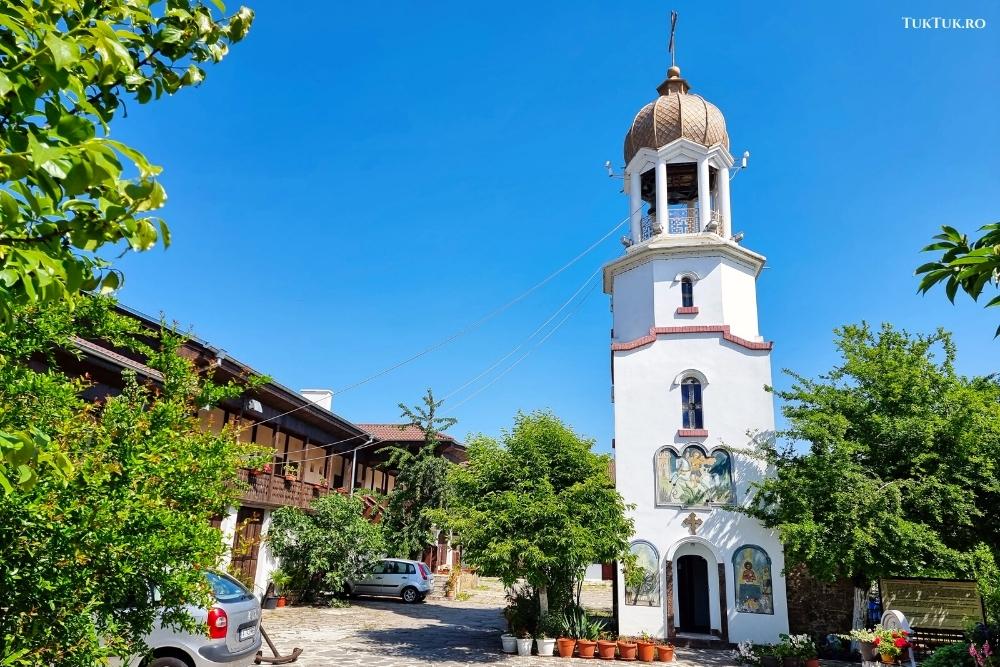
Built by Greek settlers in the 7th century (as a temple dedicated to the martyr George), St George’s Monastery in Pomorie is one of the oldest places of worship in Bulgaria, located in the new part of Pomorie. The shrine of this monastery of monks is believed to be a healing spring of St George, which, according to legend, cures serious illnesses.
A miracle-working icon, a superb example of iconographic art from the 18th and 19th centuries, is also preserved in the church of St George’s Monastery. The church was built around the ancient temple in 1856, the monastery having been built in Byzantine times on the site of a former military base.
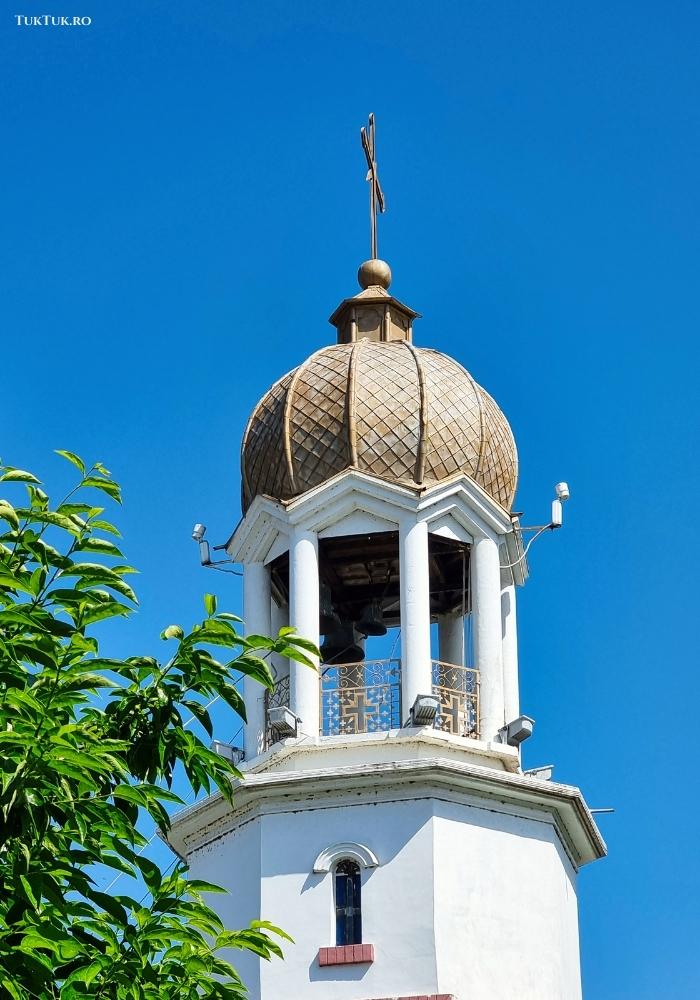
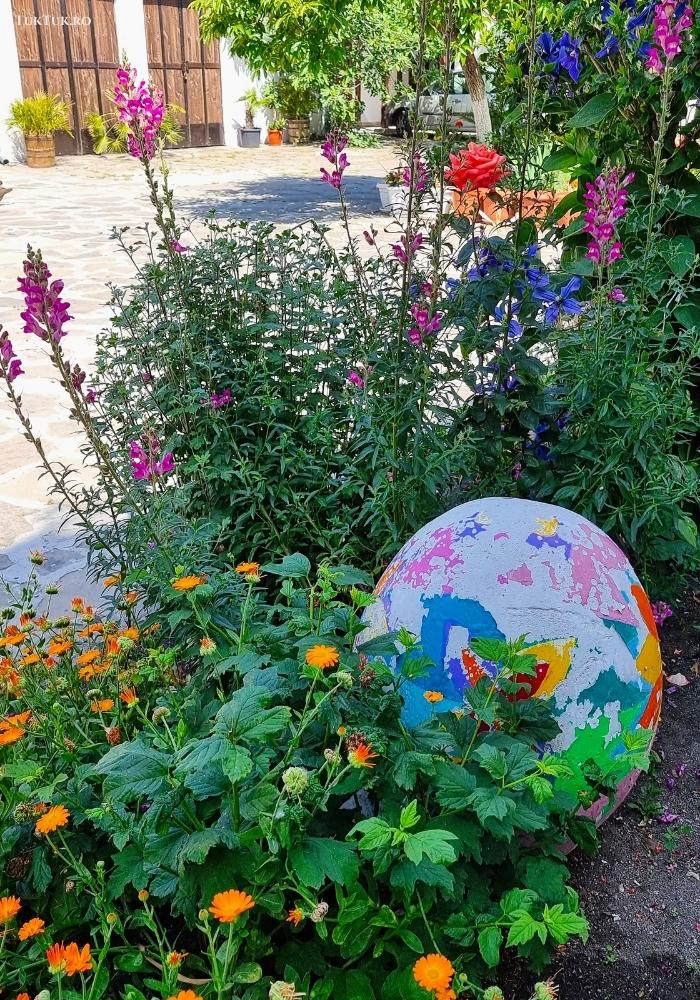
The legend of this monastery is interesting. When Bulgaria was under Ottoman occupation, the territory on which Pomorie is situated was ruled by a Turkish administrator – Selim Bey. He suffered from an incurable disease and was said to be blind and spent his life in darkness.
One night, Selim Bey dreamt that he had found a holy spring in the courtyard of his house whose water could cure any illness. That morning he began to search for the spring’s location, but came across a bas-relief of Saint George. He pushed the stone slab back into place and found that there was a spring there. So he drank from its water, after which his sight returned. Legend has it that Selim Bey and his family were converted to Christianity as a result, and the Turk ordered the foundation of a monastery on the site of the healing spring. After the death of his wife, he became the monastery’s abbot.
Take a walking tour of Burgas
If you’re on holiday in Pomorie, it’s a shame not to visit the city of Burgas. While it might seem a crowded area at first glance – after all, Burgas is Bulgaria’s fourth-largest city, with a population of around 200,000 – it is also a tourist resort.
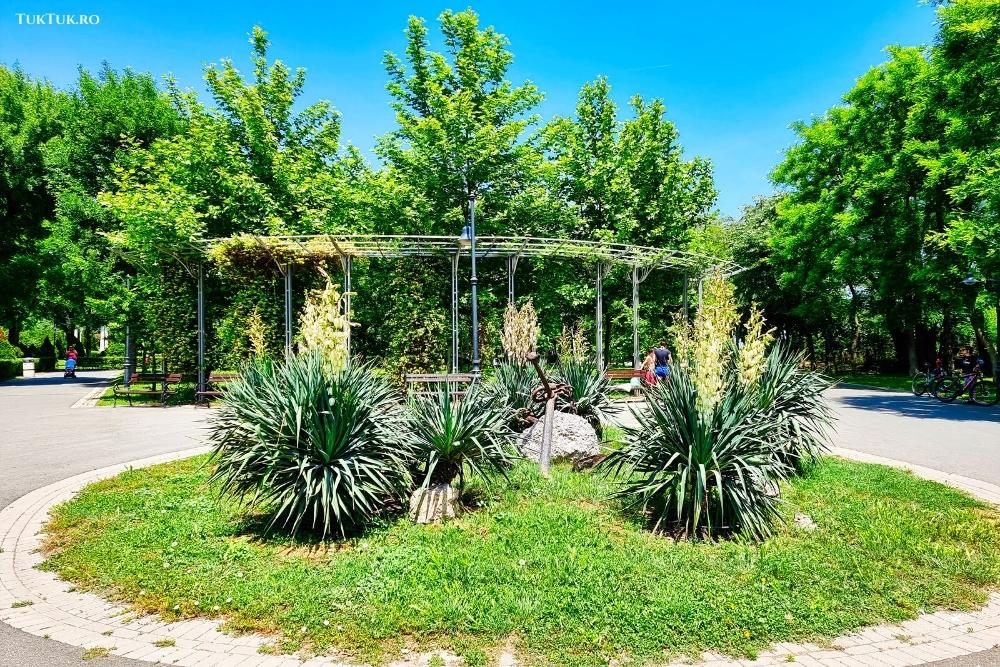
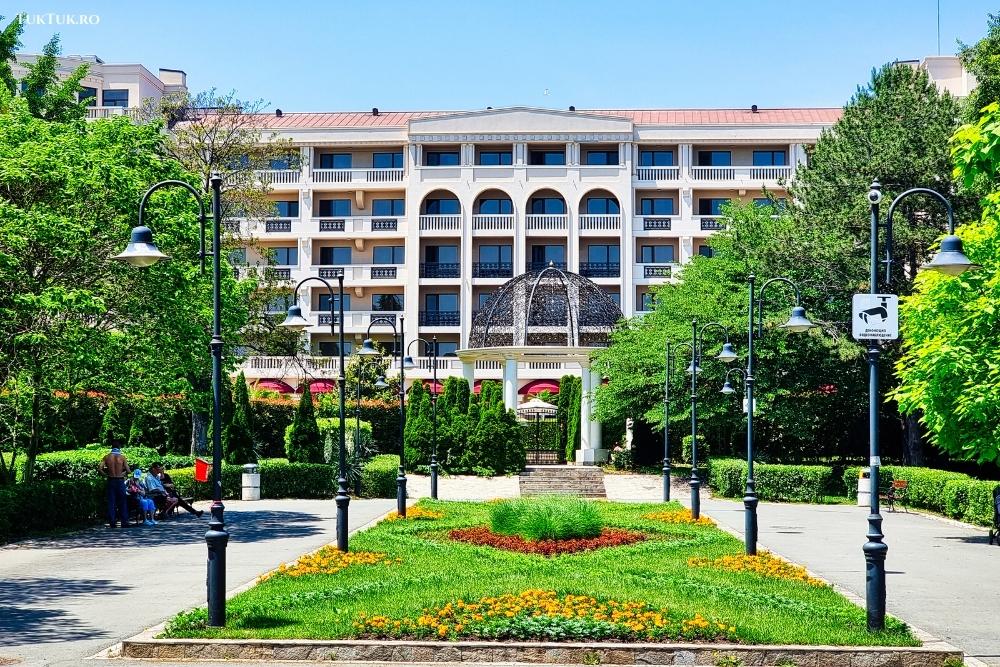
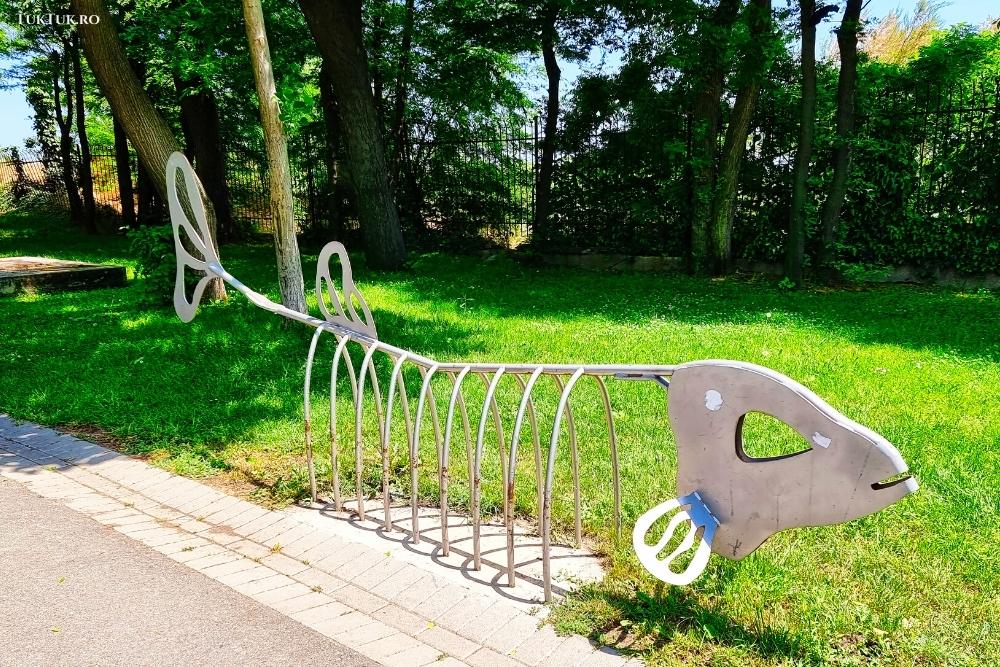
I started with a walk through the beautiful Sea Garden Park, which stretches along the coastline over an area of 72,000 sq m, and is home to many of Burgas’ tourist attractions, including fountains, cafes, children’s playgrounds, an open-air theatre, stalls and terraces, tennis courts, etc.
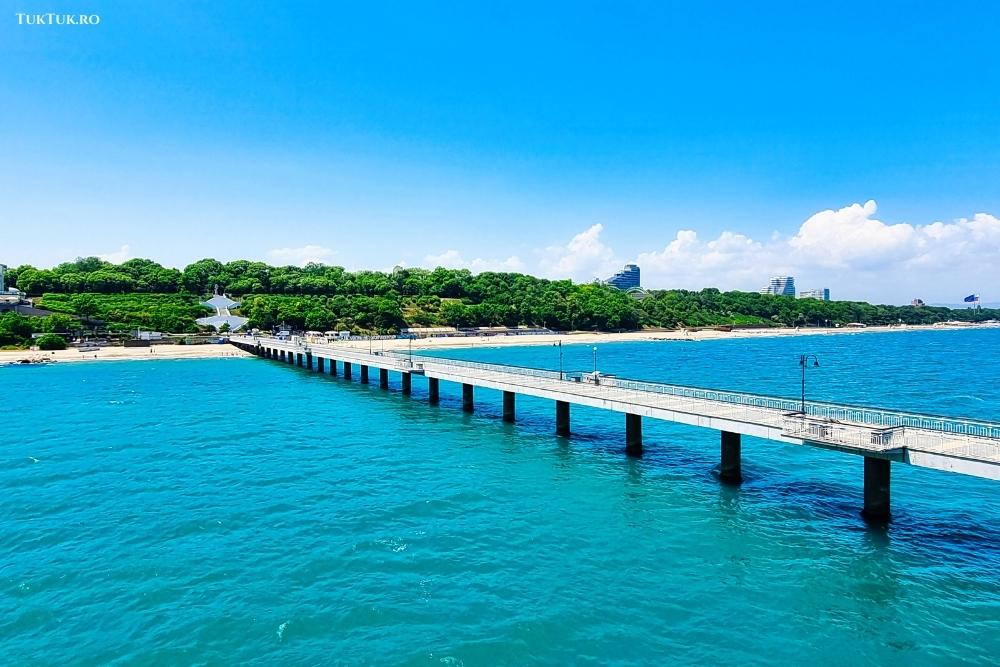
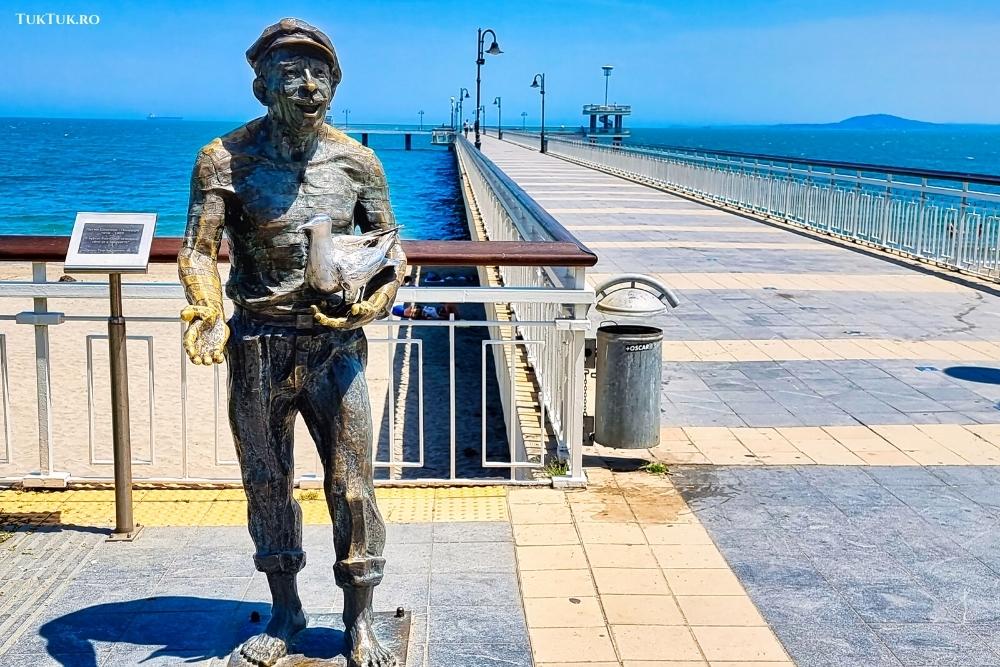
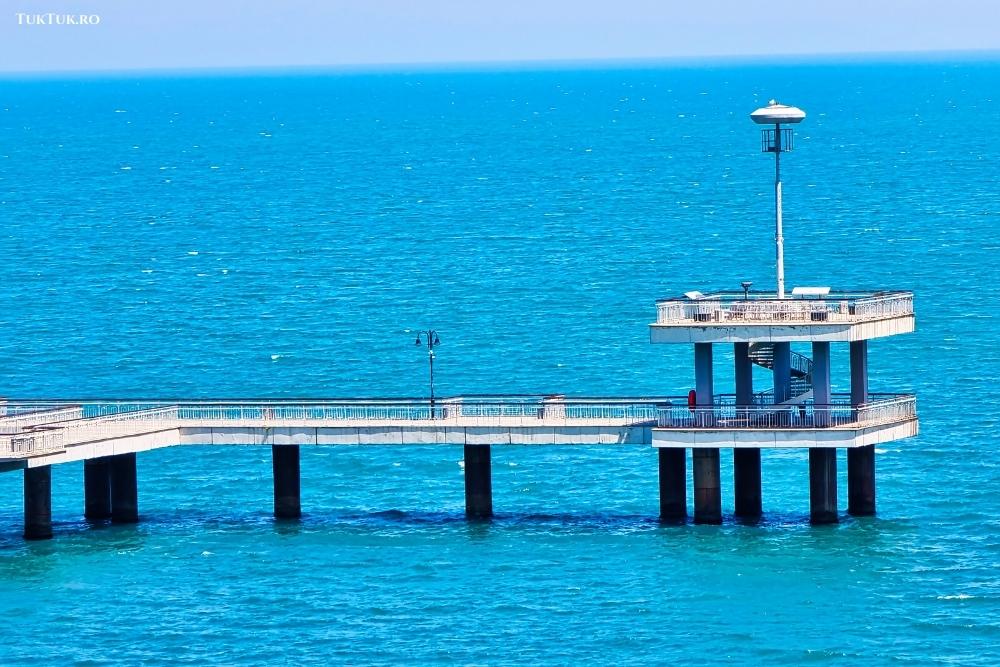
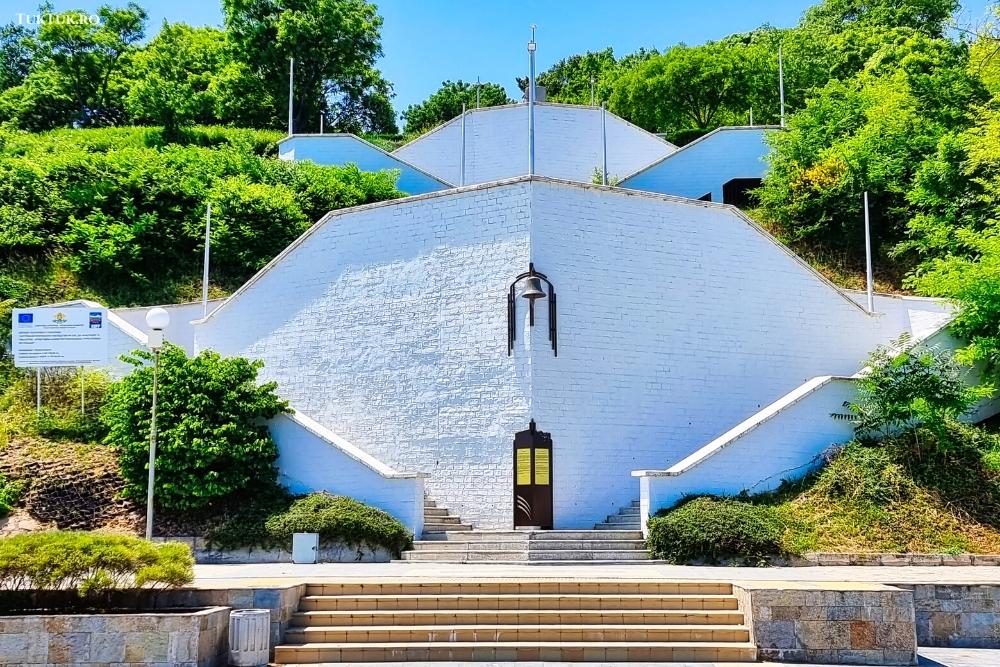
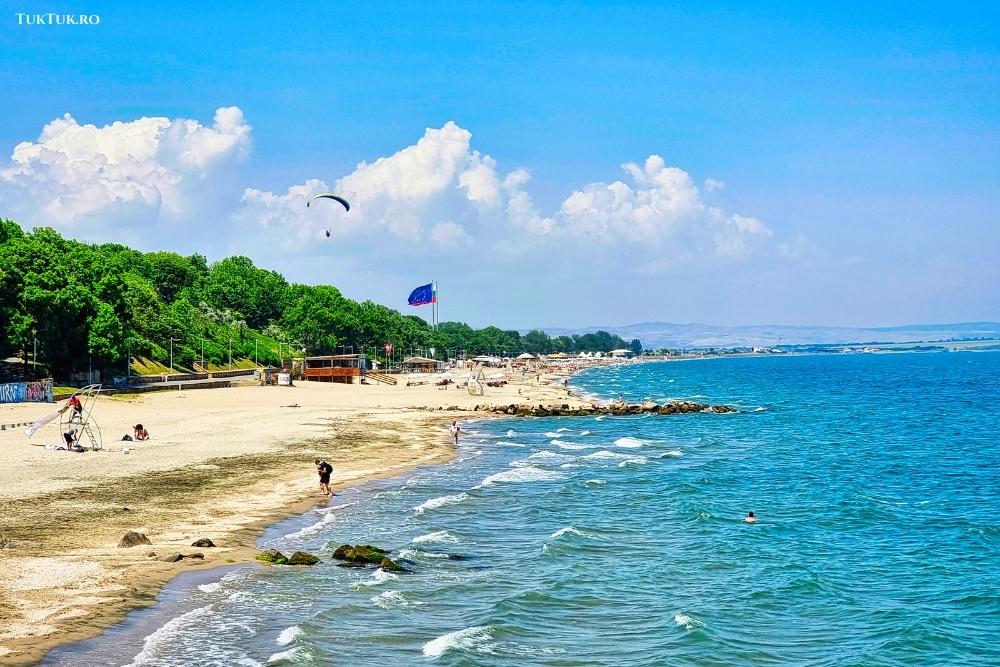
I then continued along the seafront to the beautiful pier, stretching from the Sea Garden’s edge 300 meters into the sea. The pier is in the shape of a letter T and can be one of the most romantic places for an evening stroll, all the way to the observation platform erected at the end.
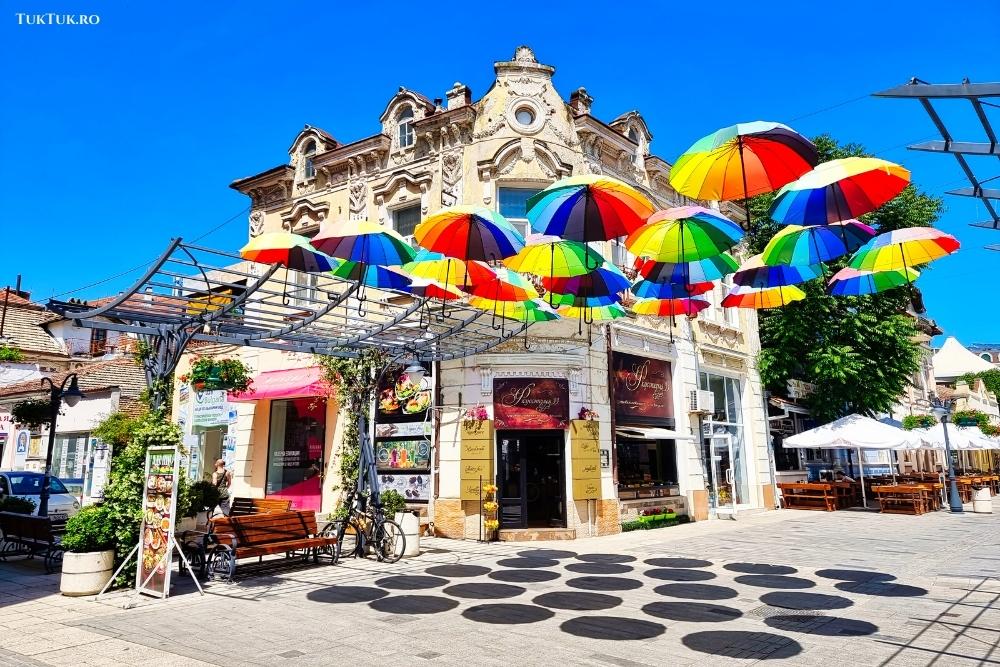
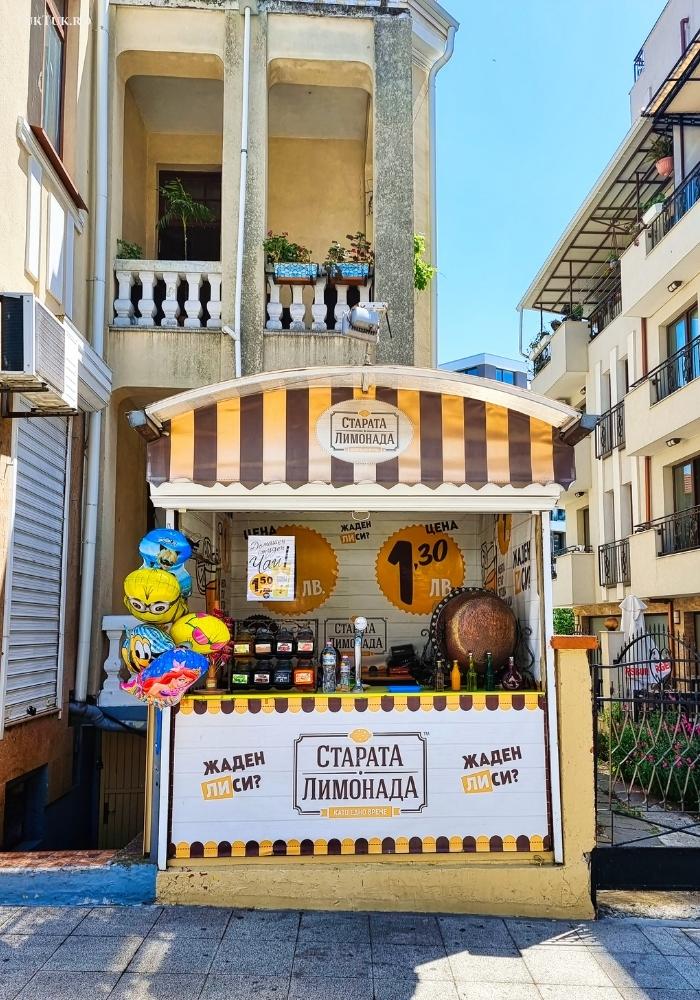
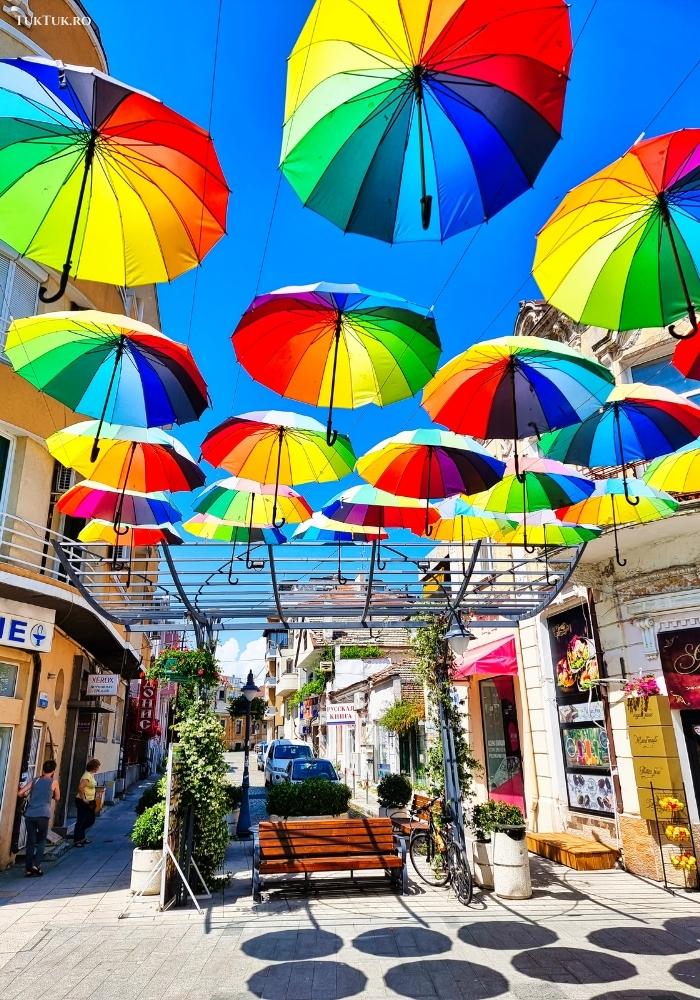
After my foray along the pier and a cocktail at the café on the cliff, I set off through the old centre of Burgas for a brief survey of the buildings on the pedestrian artery. A pleasant impression of a neat city that retains a certain perfume of yesteryear, but at the same time seems well anchored in the present, the atmosphere – even in the afternoon hours – lively and energetic.
Attend an embers dance performance in the village of Bata
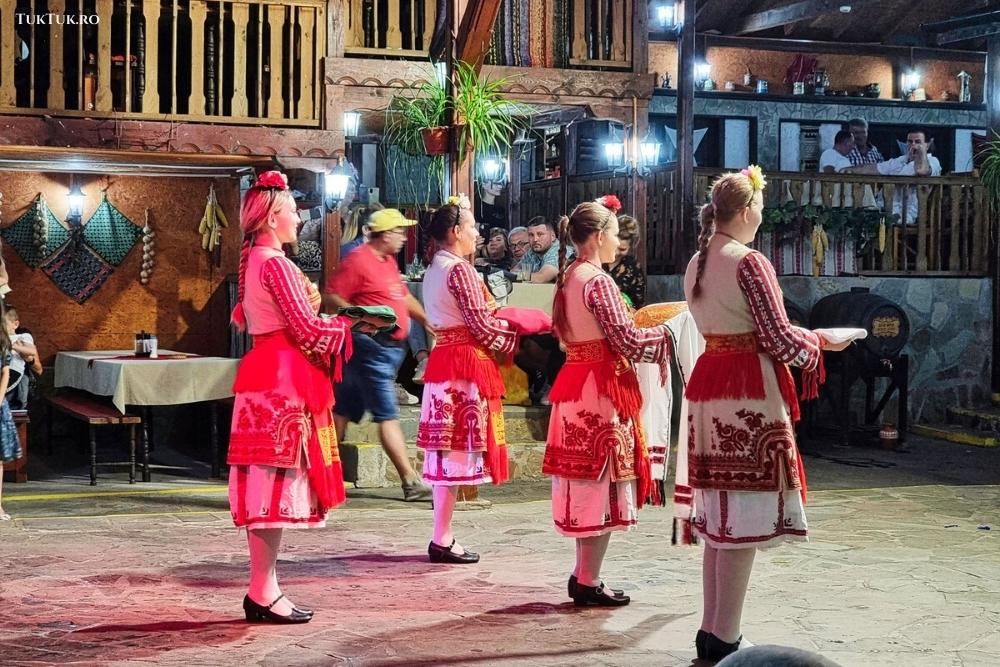
In the village of Bata, about 45 minutes from Pomorie, there is the Zlatna Batchva – Golden Barrel restaurant. A sort of tourist semi-hut, if we’re being fair, but it can become interesting for someone less discerning. It’s a popular place (it can seat 250 customers) where hordes of foreign tourists are brought in, ready to enjoy the sight of a “variety” show that starts with a children’s show and continues with one that includes Bulgarian folk music and dancing, and ends with the icing on the cake: a barefoot dance in embers.
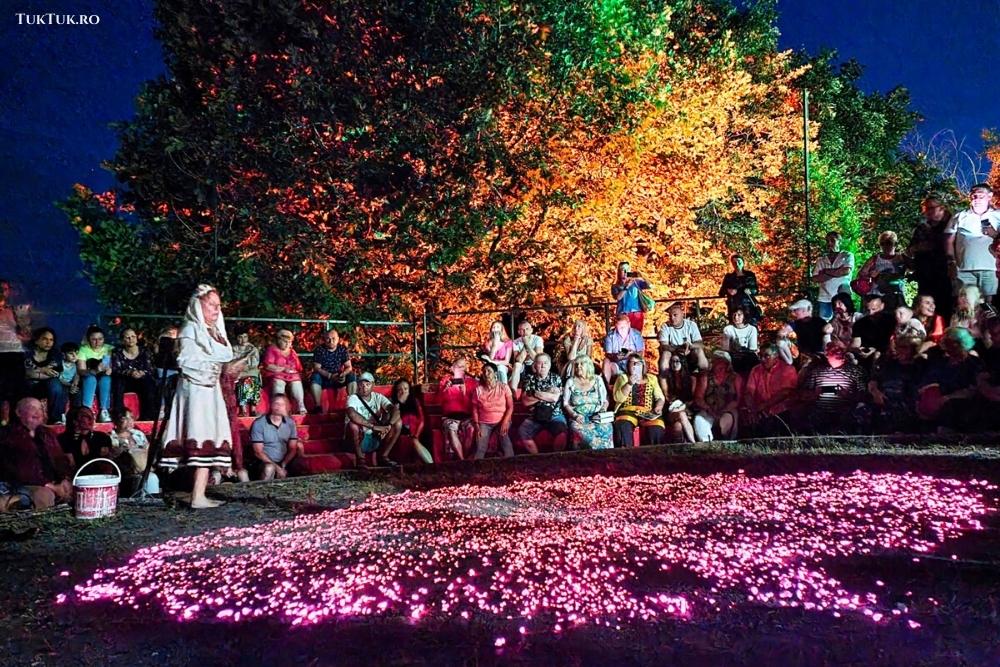
The food is communal – you get a set menu, with salad and barbecue (the price for the whole package isn’t big, though), but the wine (white or red) is free (you pour it yourself from the barrel into ceramic jugs). The show can be fun if it catches you in a certain mood, especially if you like bouncing to bagpipe beats in the middle of the dance floor. The highlight, however, is the performance of the dancer on the embers, whose mysterious ritual ends the evening and is appreciated at the end by everyone, more or less intoxicated by the free wine.
Visit a fishing village
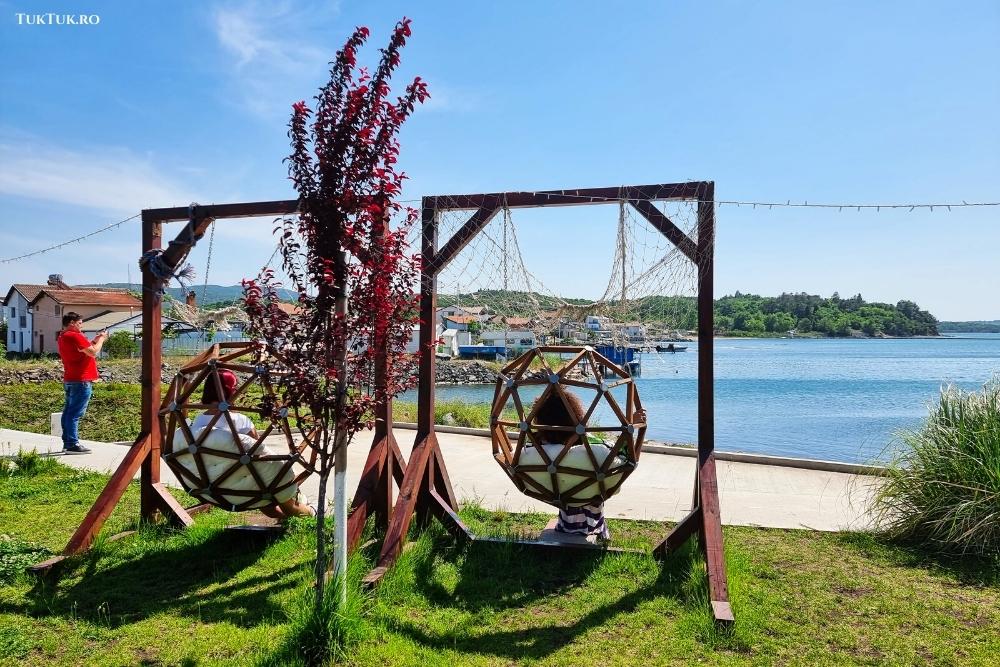
The Chenghene Skele Cultural and Tourist Complex is a small fishing village 15 kilometers south of Burgas. A place where amateurs come to fish in the summer, but which has managed to preserve fishing traditions to this day, thanks to a local community.
The complex is very well laid out, the “stars” being several exhibition houses (three in number) that take you through a real lesson in history and seafaring culture, showing the customs of the fishermen, the gear they use, and their daily life. How to weave nets, tie sea knots, prepare a traditional fisherman’s dish, stories about fishermen’s beliefs, related legends – all this is to be found in the three houses that can be visited.
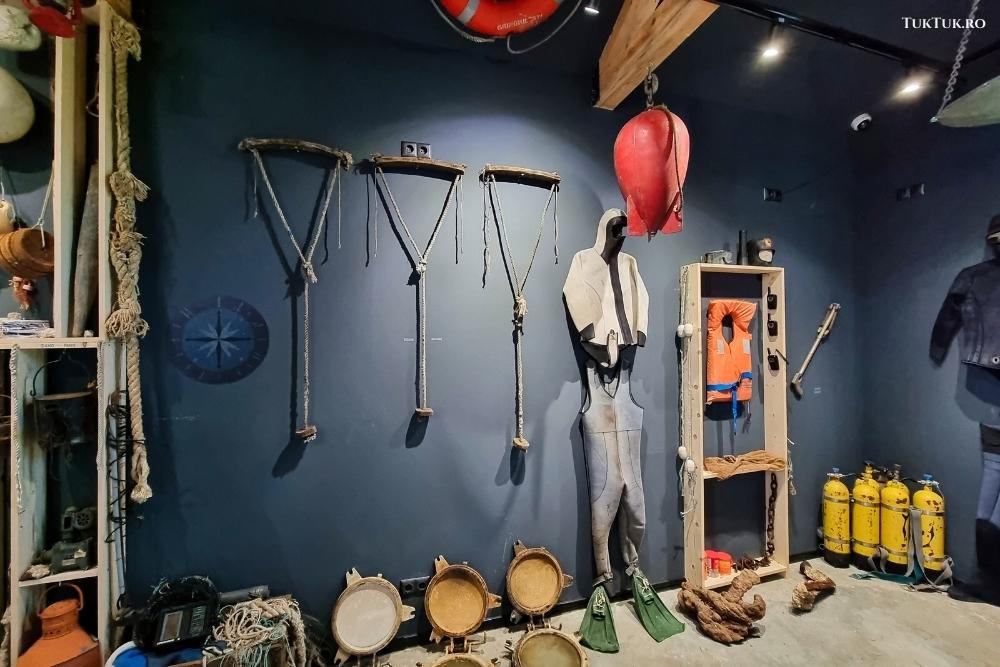
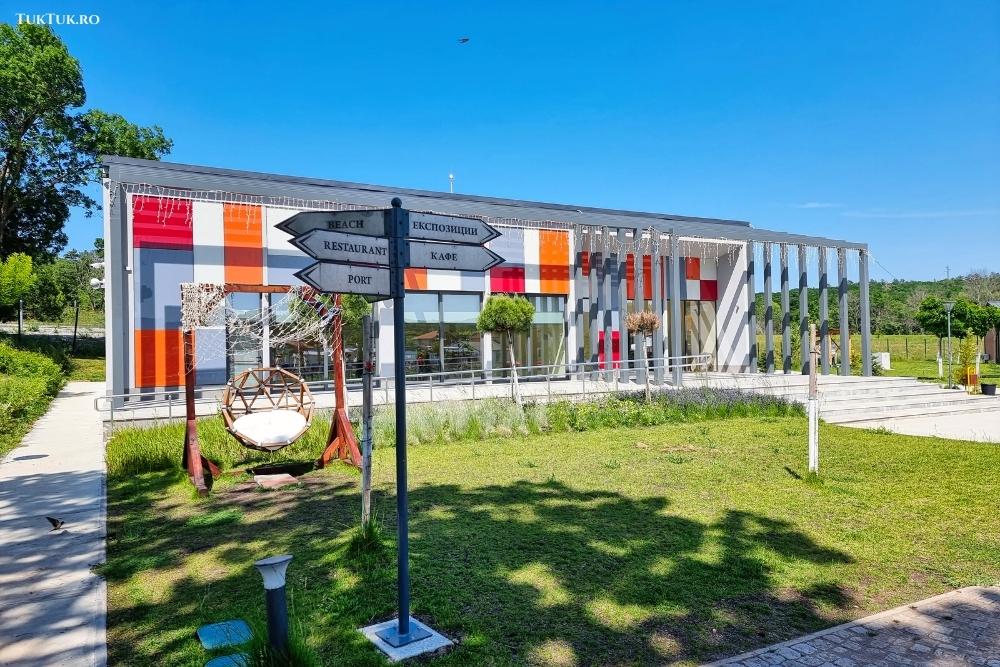
The village’s history began in 1972 when fishermen’s boats from Burgas were moved here because the harbor there was being expanded. This relocation included the construction of three artificial canals, where the fishermen’s huts and boats are located today. The Chenghene Skele complex also has a restaurant where you can taste traditional fish recipes and a performance hall. There is a small beach nearby, and from the dock of the complex, you can rent a boat to take a boat trip to enjoy the beautiful sunsets over the Bay of Burgas.
Have fun at an aqua park
Sunset Aqua Park Pomorie is the best option if the waves of the sea are not enough to satisfy your desire for fun. Located at the entrance to Pomorie, near the Sunset Resort, this is one of Bulgaria’s most beautiful aqua parks, offering no less than 32 water slides of various lengths, sizes, and degrees of… adrenaline. At Sunset Aqua Park, you can enjoy the longest water slides in the Balkans, each 150 meters long. In fact, the total length of the slides in the park exceeds 1120 meters! The amusement park’s attractions include the Mini Pendulum, Free Fall and Kamikaze, Twister Slide, Crazy Downhill, and Zero Gravity, Typhoon Tunnel, and Spiral.
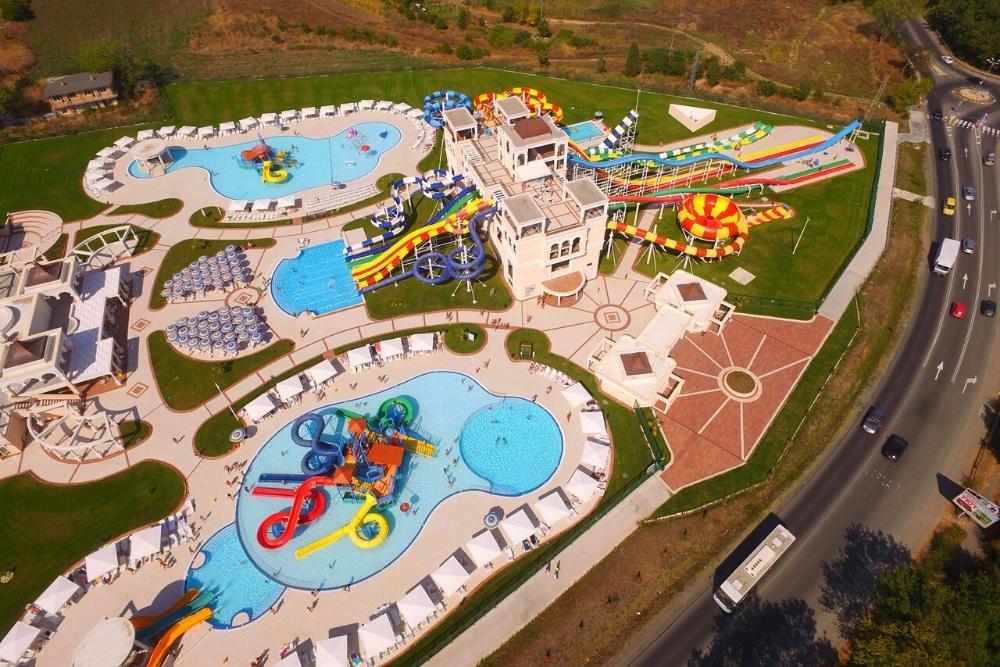
Sunset Aqua Park Pomorie is open from 10 am to 6.30 pm; the price of a day ticket for being 40 leva (20 euro) for adults and 20 leva (10 euro) for children under 1.30 m tall. Half-day tickets are also available for 30 and 15 leva respectively.
These are just 11 things to do and see in and around Pomorie. I haven’t included the “escapes” to the two “sister” gems of the Bulgarian Seaside, Sozopol and Nesebar, which I’ll discuss in another article. However, these two destinations should certainly not be missing from the itinerary of a wandering tourist (or traveler) who wants to discover as many places in Bulgaria as possible. It is worth mentioning that Sunny Beach and Sveti Vlas are also nearby, which we also talk about in another article. Enjoy your holiday in Pomorie!
Pin it!
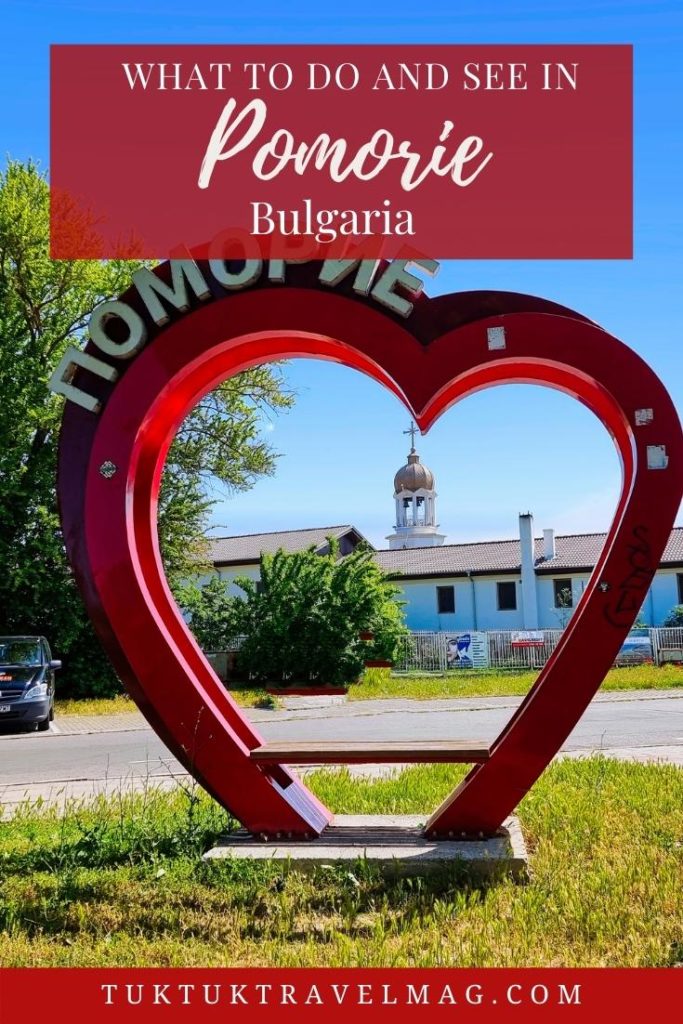
You may also like: Kyustendil, a magnificent EDEN destination in Bulgaria

